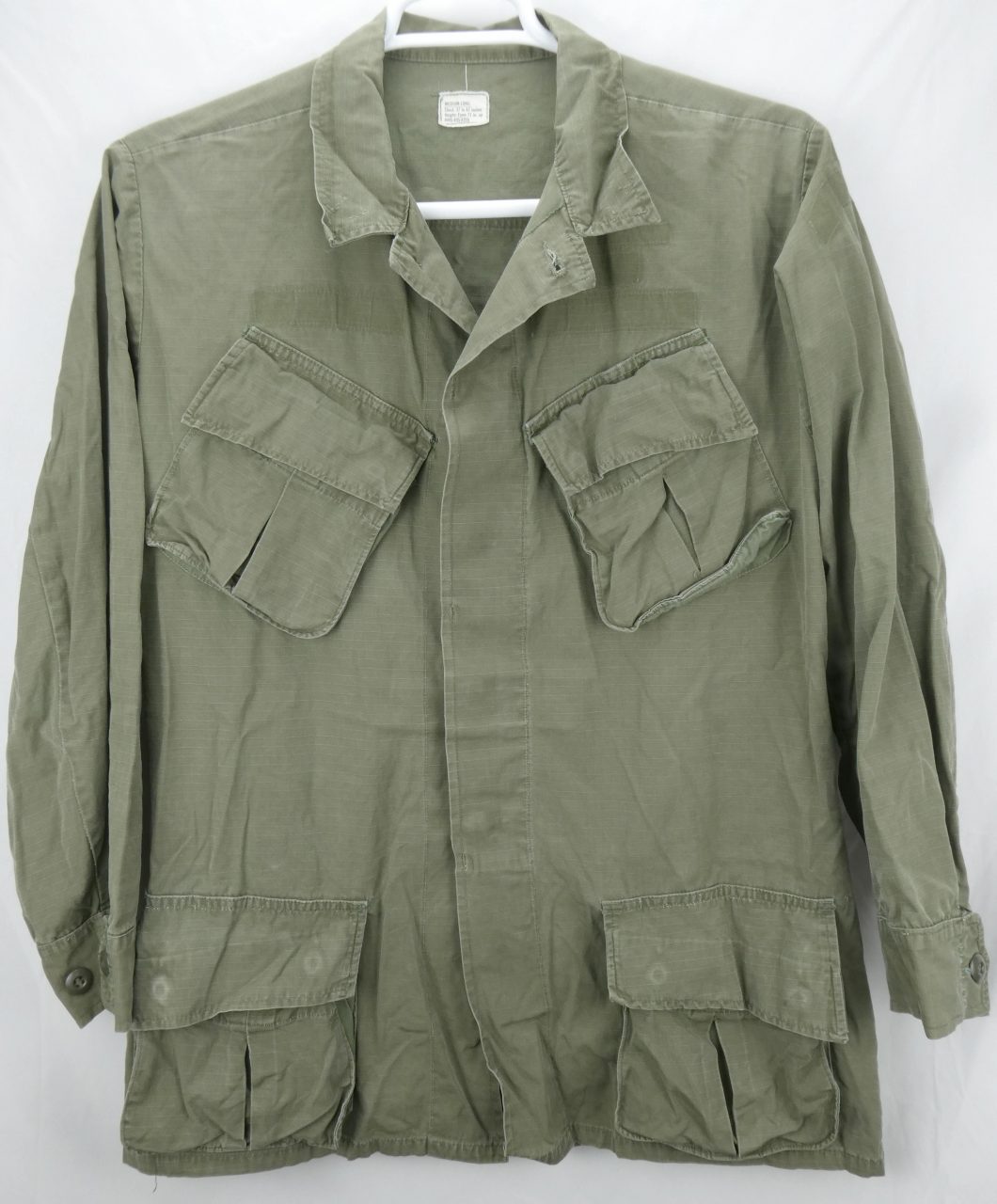Olive Drab:
Solid color jungle fatigues were available in three primary “patterns” and in non-ripstop poplin (earlier) and ripstop poplin (later) fabrics. Although all items were supposed to be OG-107 like the sateen uniforms in use at the time, shades often varied depending on fabric batch and wear in the field.
First Pattern:
This was the earliest version of the jungle fatigue. It is characterized by shiny exposed pocket buttons which had a tendency to snag onto brush and were excessively visible. In spite of these flaws, some soldiers retained them as a fashionable dress item to denote seniority. The example shown here is a high quality reproduction made by Real McCoys since I do not have an actual example to show as of time of writing (July 2, 2024).
Real McCoys Repro Jacket:



Real McCoys Repro Trousers:


Tags:


Leg Ties:
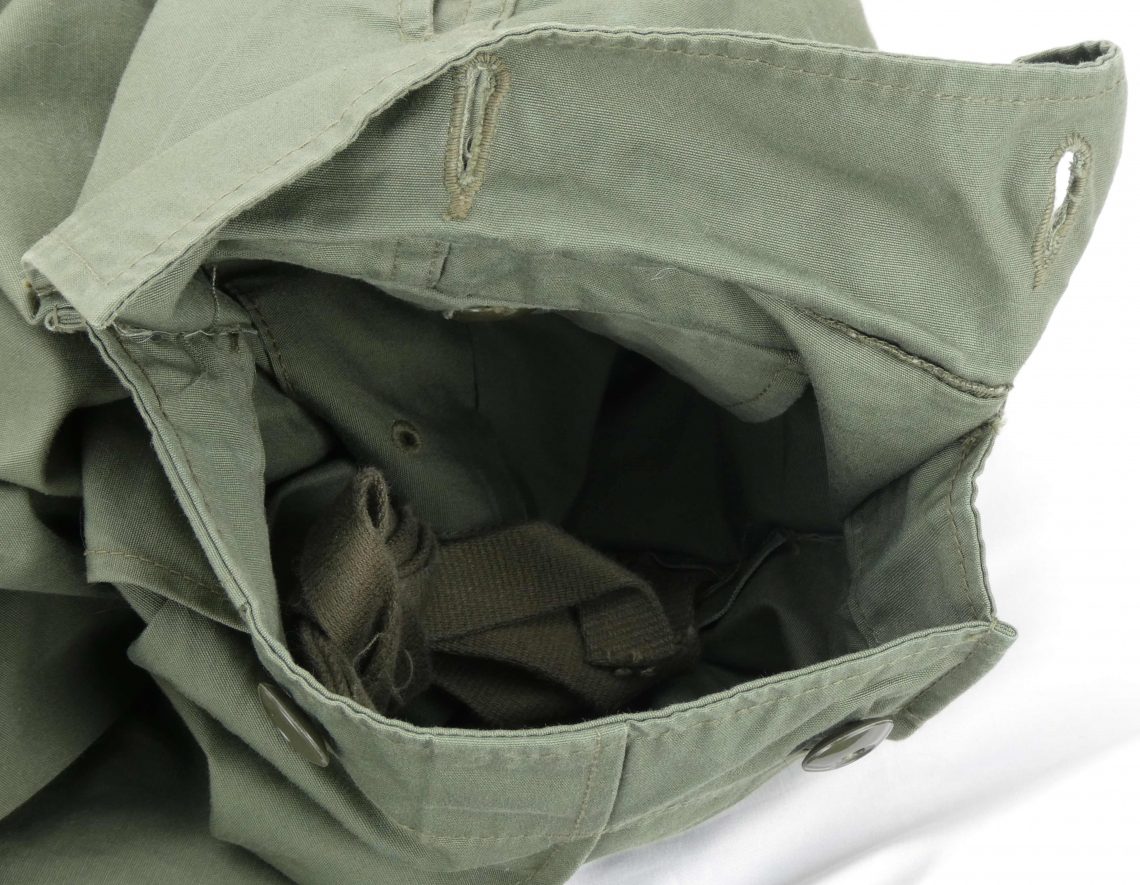
There are leg tie webbing straps inside the thigh pockets. This feature originally appeared in WW2 M42 jump trousers and was removed in later iterations of jungle fatigues.
Second Pattern:
The second pattern was largely the same as the first pattern, but with covered pocket buttons. These were produced from 1965 – 1966. There were several transitional examples between the second and third pattern, though no examples are currently on hand to display here (as of July 2, 2024).
Third Pattern:
This was the most common version of jungle fatigue and was produced from 1967 until the end of production in 1970 or 1971. The 3rd pattern simplified the second pattern by removing the internal gas flap, waist adjuster, and epaulets. Most third pattern uniforms were made in ripstop fabric (majority after 1968), though some earlier dated examples were made from previously-produced non-ripstop poplin (some collectors classify these non-ripstop items as transitional second pattern items).
Non-Ripstop Jacket:


Tags:


Pockets:


Cuffs:
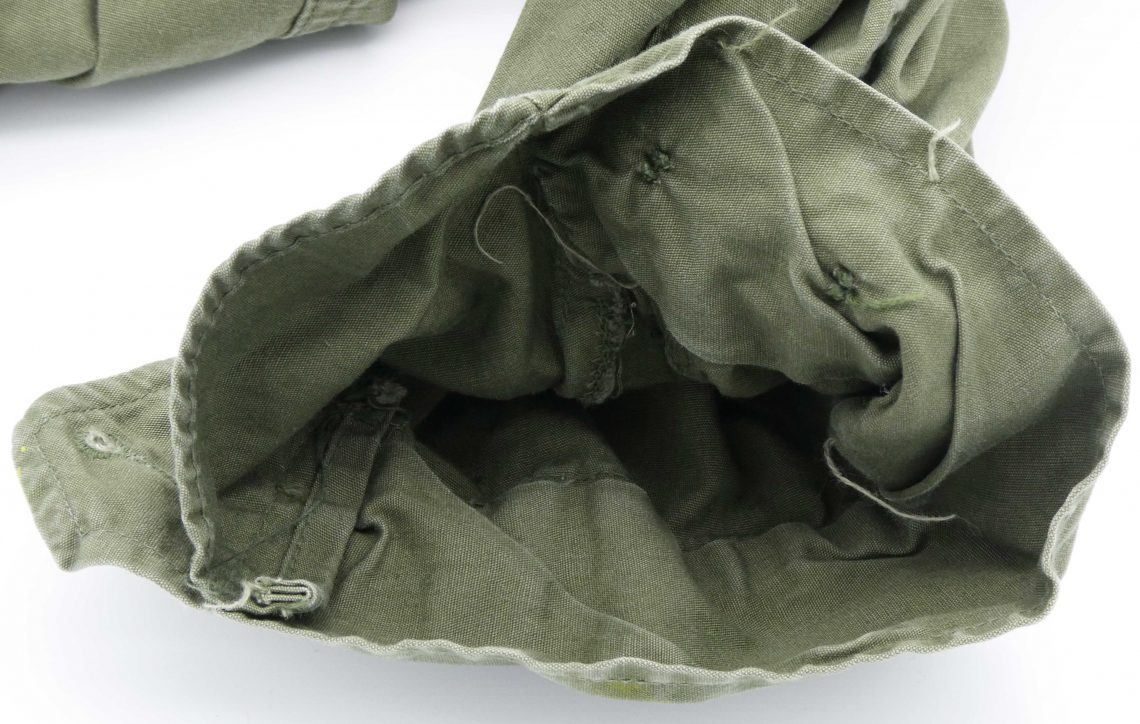

Non-Ripstop Trousers:


Tags:
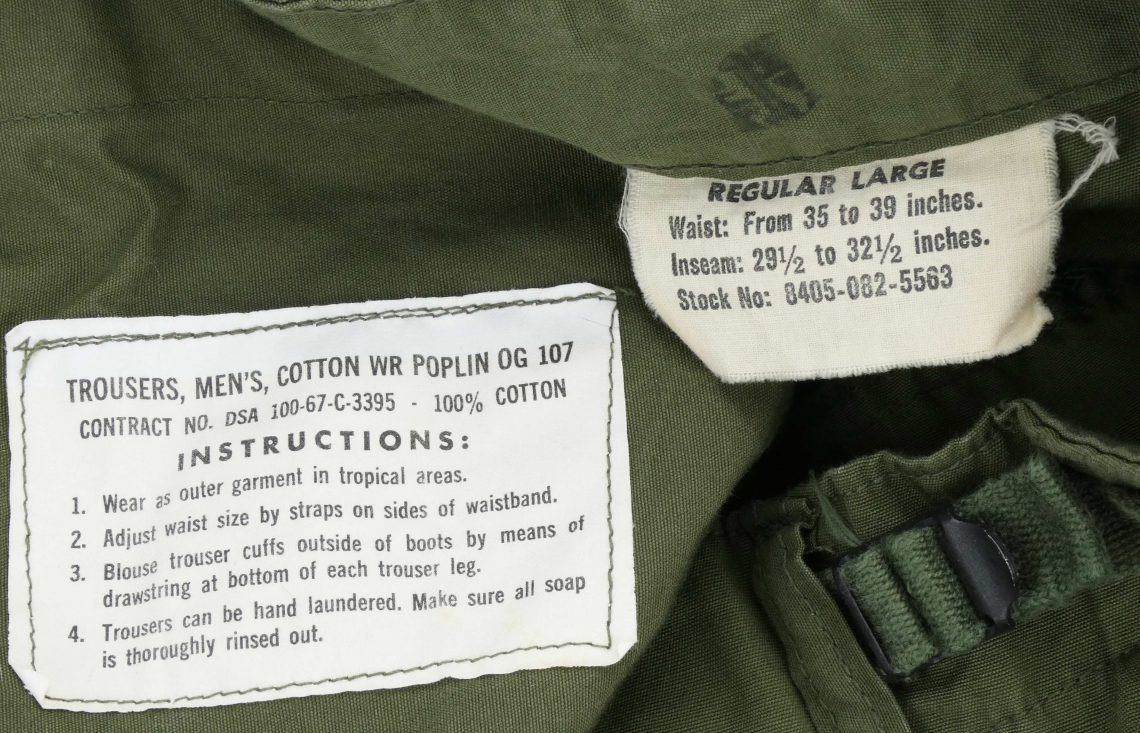
1967 date.
Cargo Pockets:


There is an internal pocket, possibly for a bandage, inside the cargo pocket:
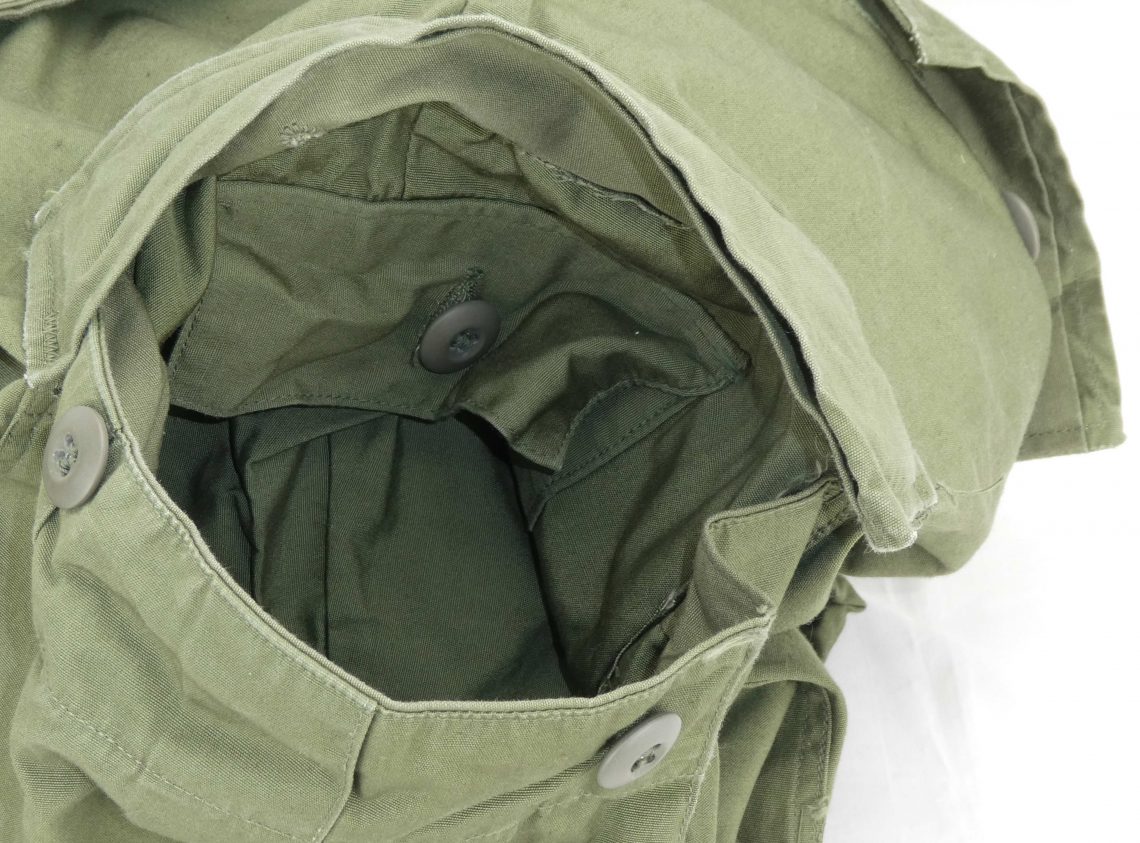
Waist Adjustment:
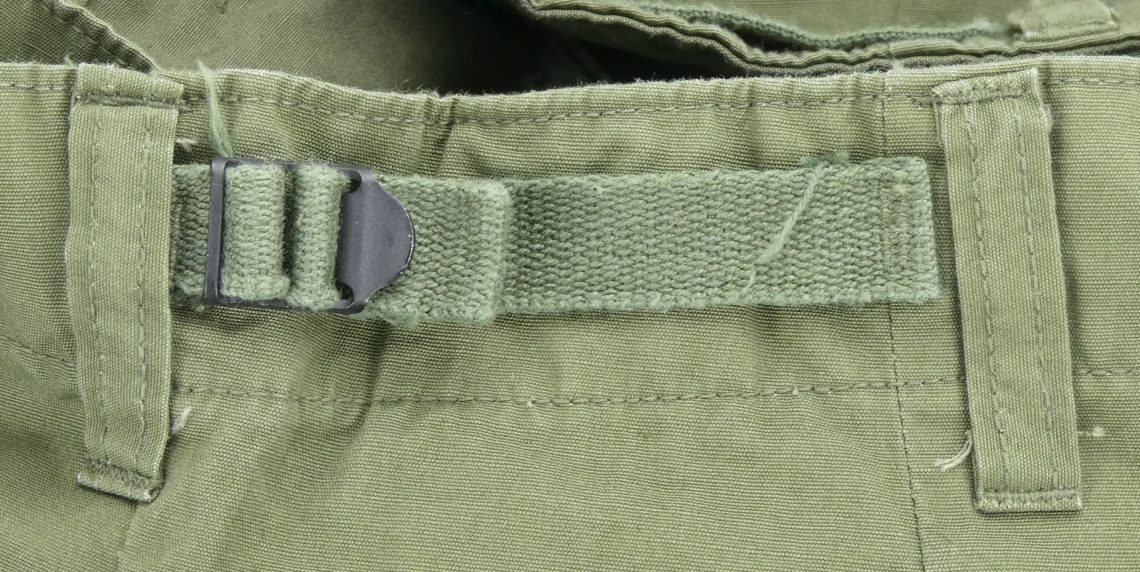
Back Pockets:
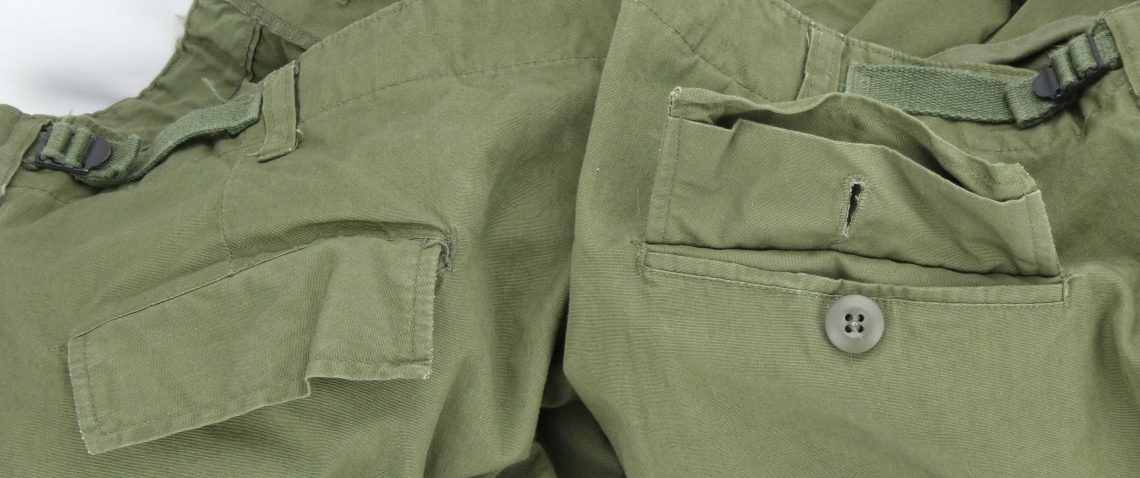
Fly:
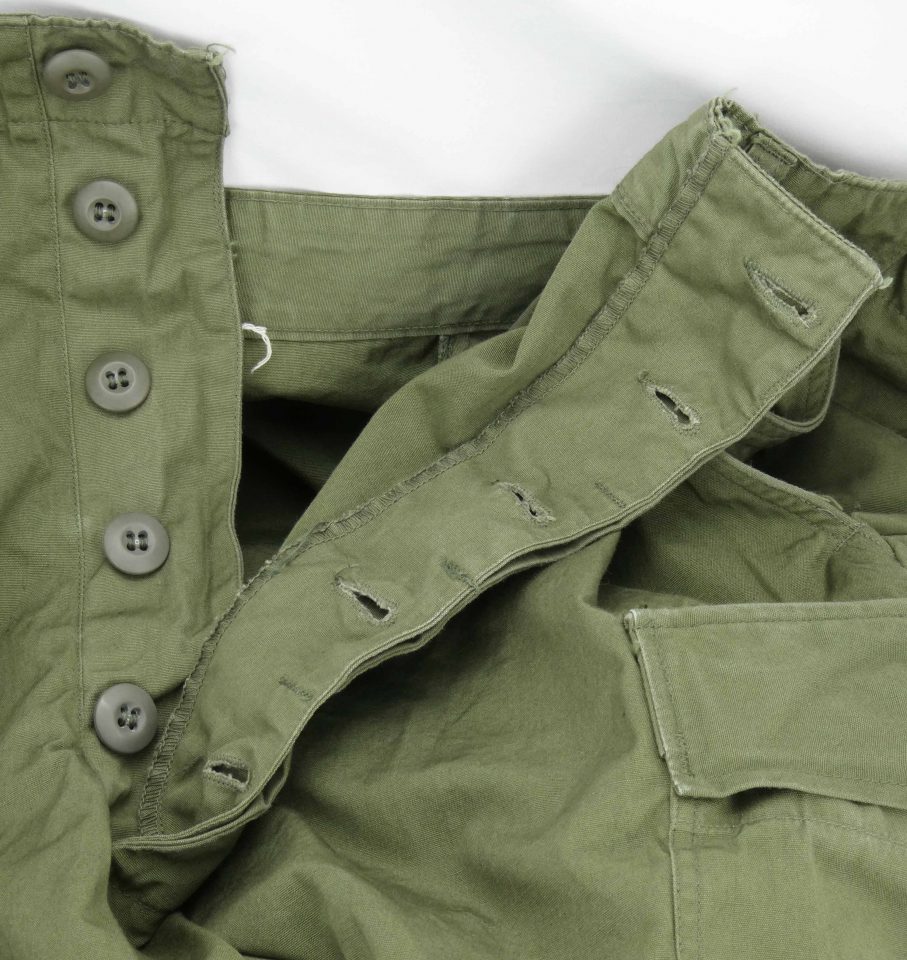
Button fly. This example was probably among the last jungle fatigue pants to be made with a button fly since it was replaced by a zipper starting in late 1967 or early 1968. This coincided with ripstop fabric replacing non-ripstop poplin.
Inside:
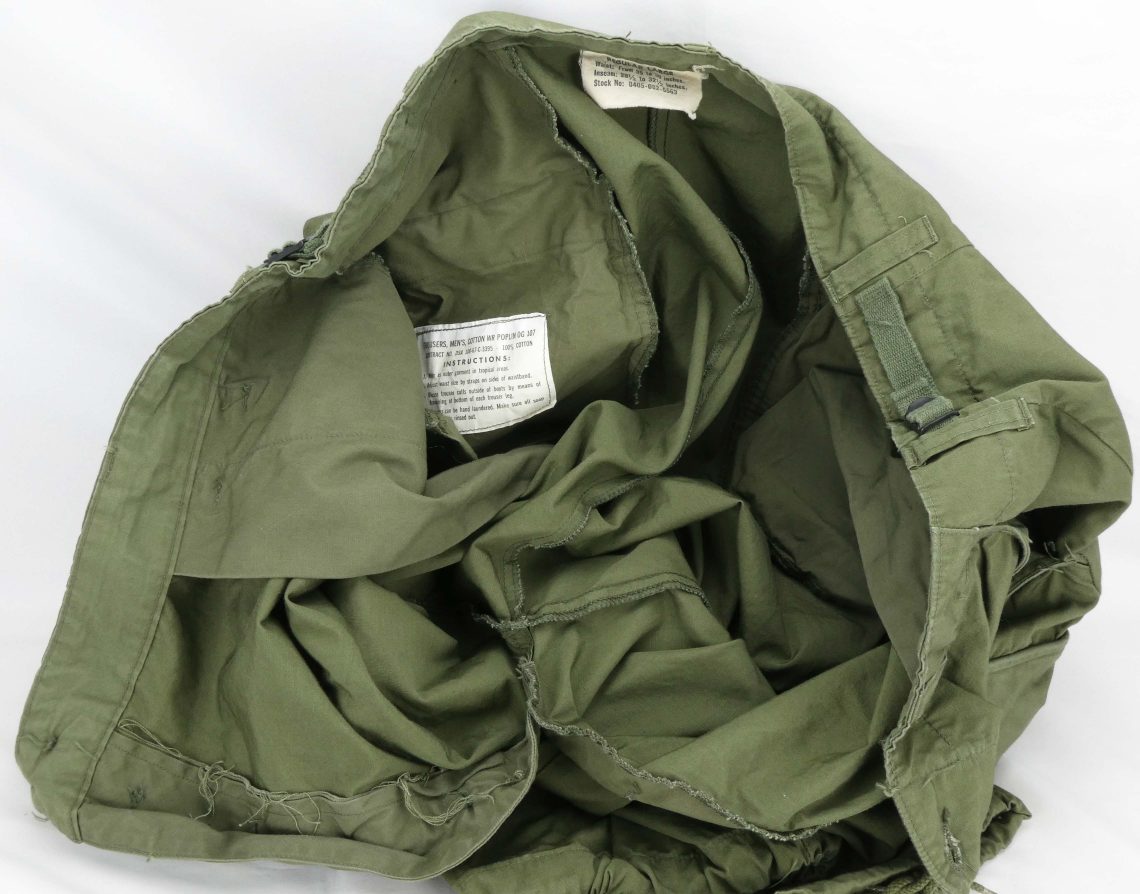
Ankles:
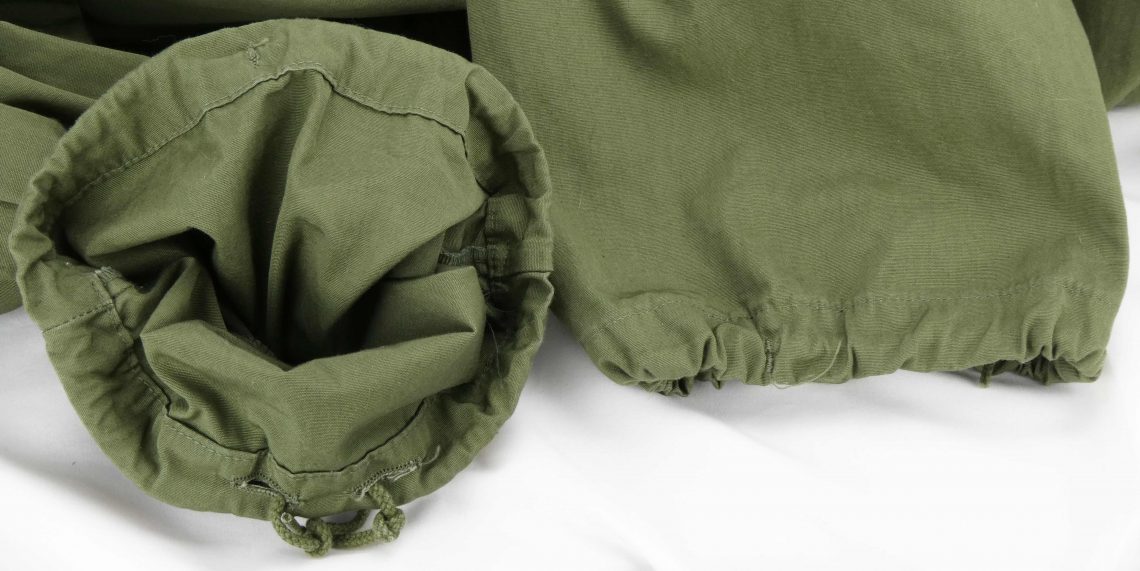
Ripstop Jacket #1: Army Ranger


Tags:

1968 date.
Chest Patch Ghosts:




Arm Patch Ghosts:


Ranger scroll insignia is from after the Vietnam War since it has the post-1983 shape.
Ripstop Trousers:


Tags:

1969 date.
Cargo Pockets:


The internal pocket is still present in ripstop examples.
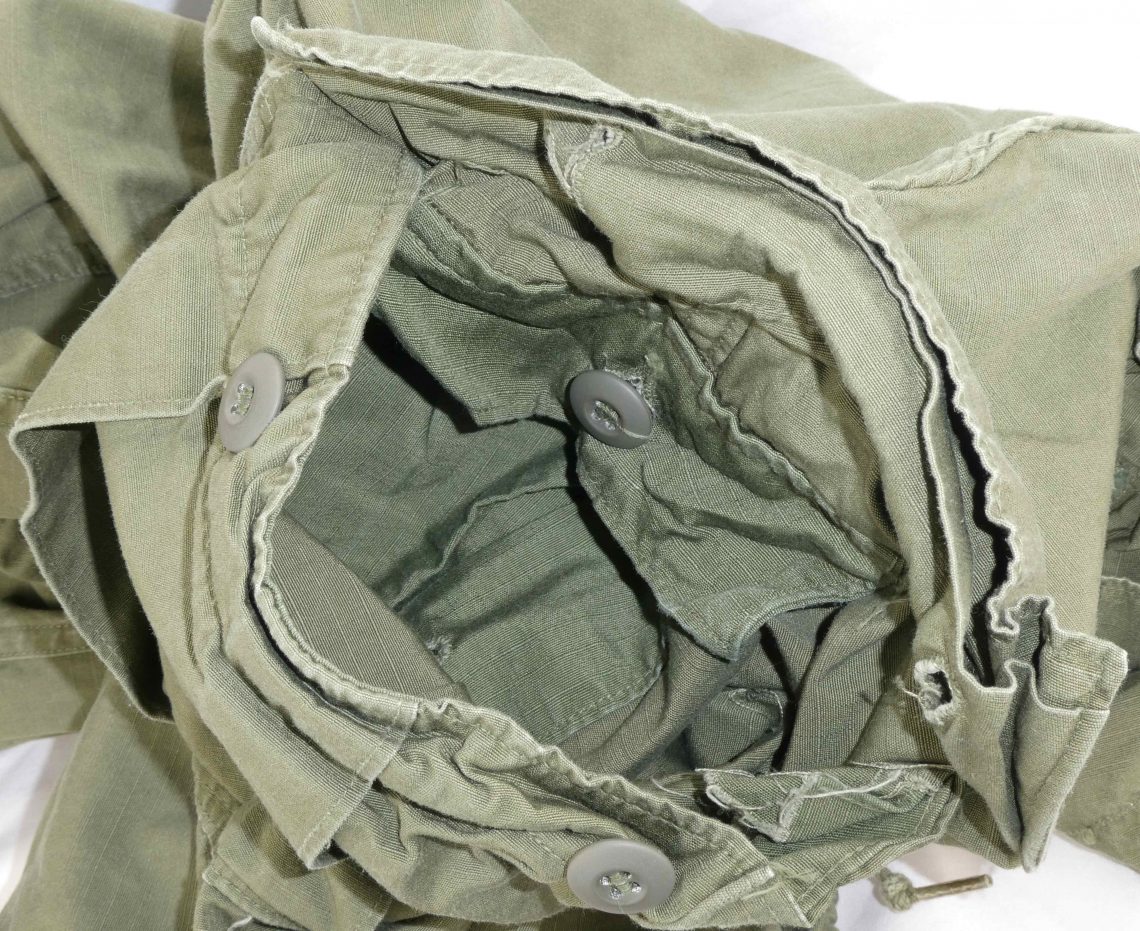
Waist Adjustment:

Fly:

Most ripstop jungle fatigue pants have a zipper fly.
Inside:
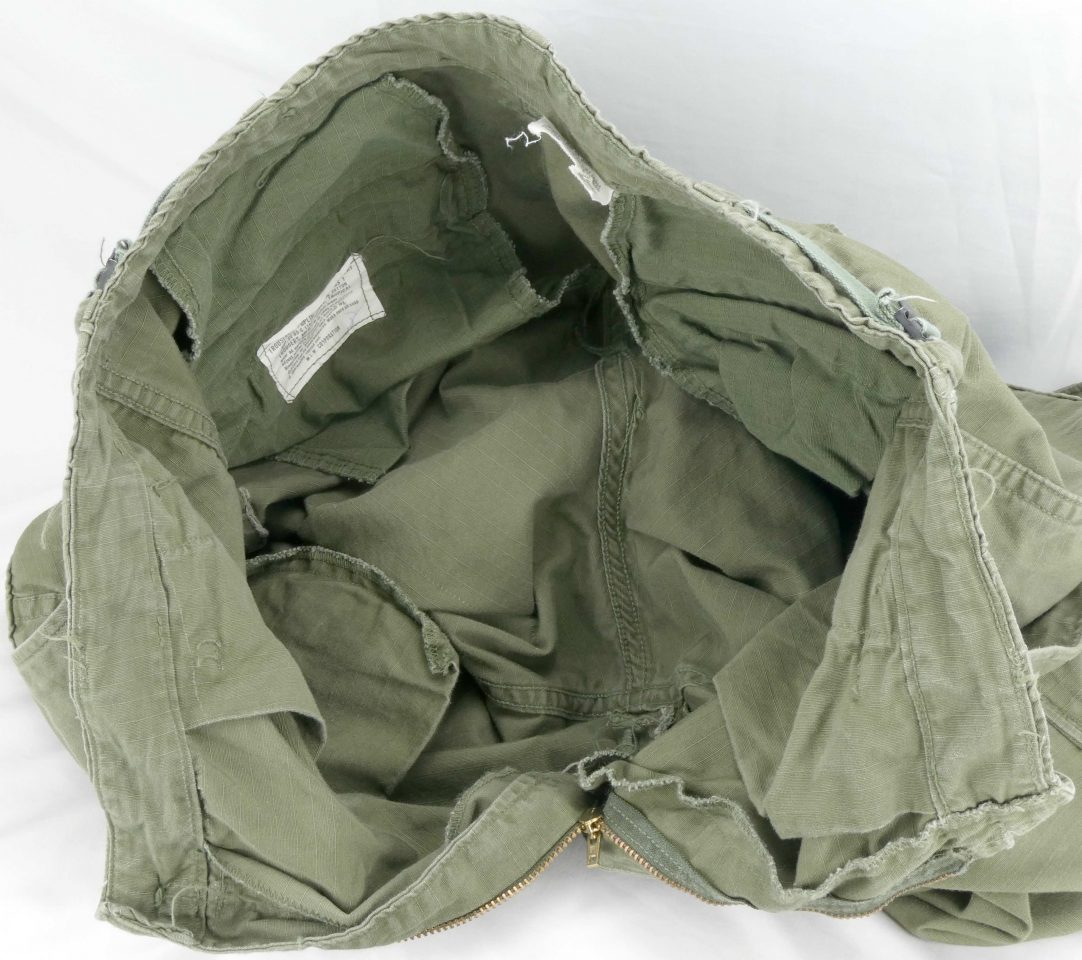
US Air Force Tailor Modified Third Pattern:
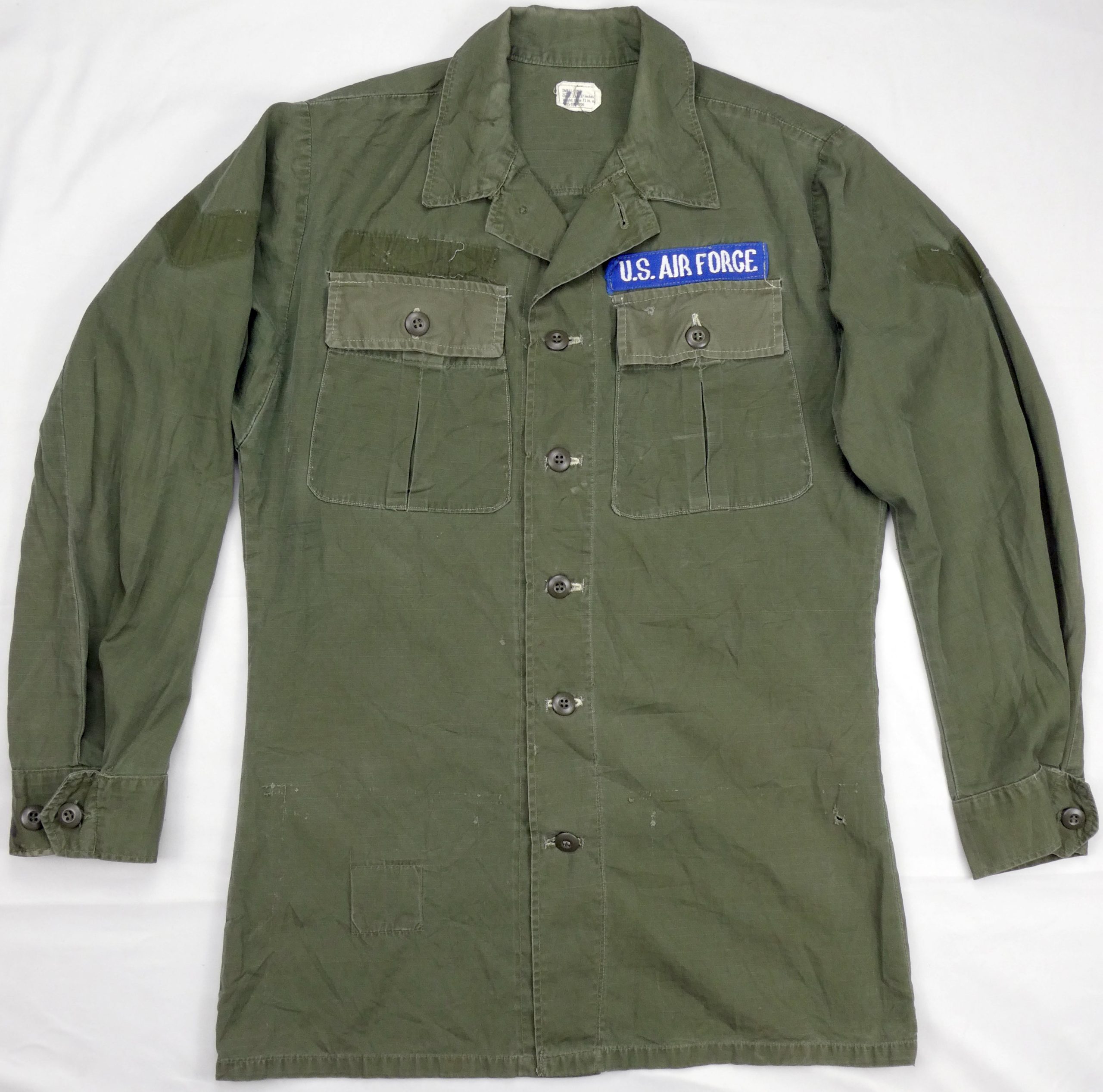
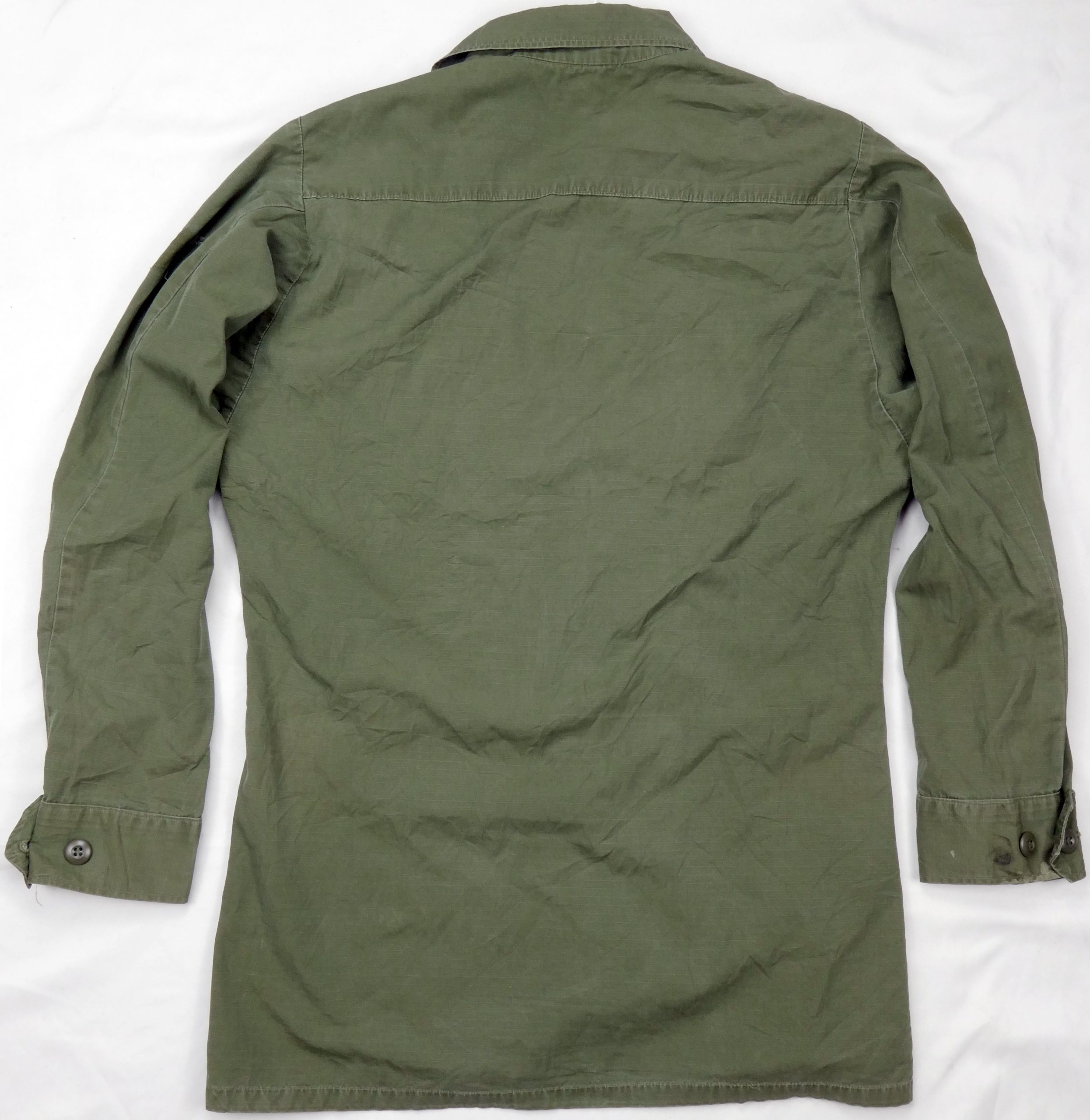
This third pattern jungle jacket was modified into a 2-pocket shirt. The lower pockets were removed so it can be tucked into the trousers. Similarly modified jungle fatigue shirts were used in Southeast Asia during the Vietnam War [1].
Pockets:
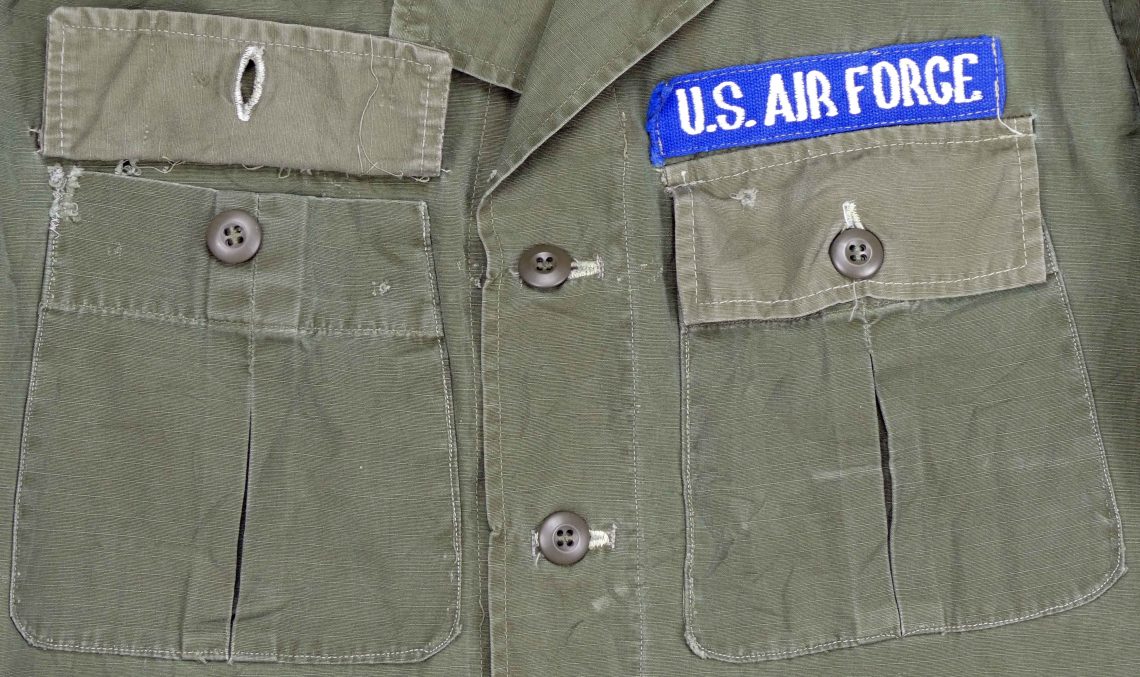
The chest pockets are made from the jungle jacket’s original pockets. The pockets’ contours and central pleat are retained. Button holes were added to the front.
Tape:
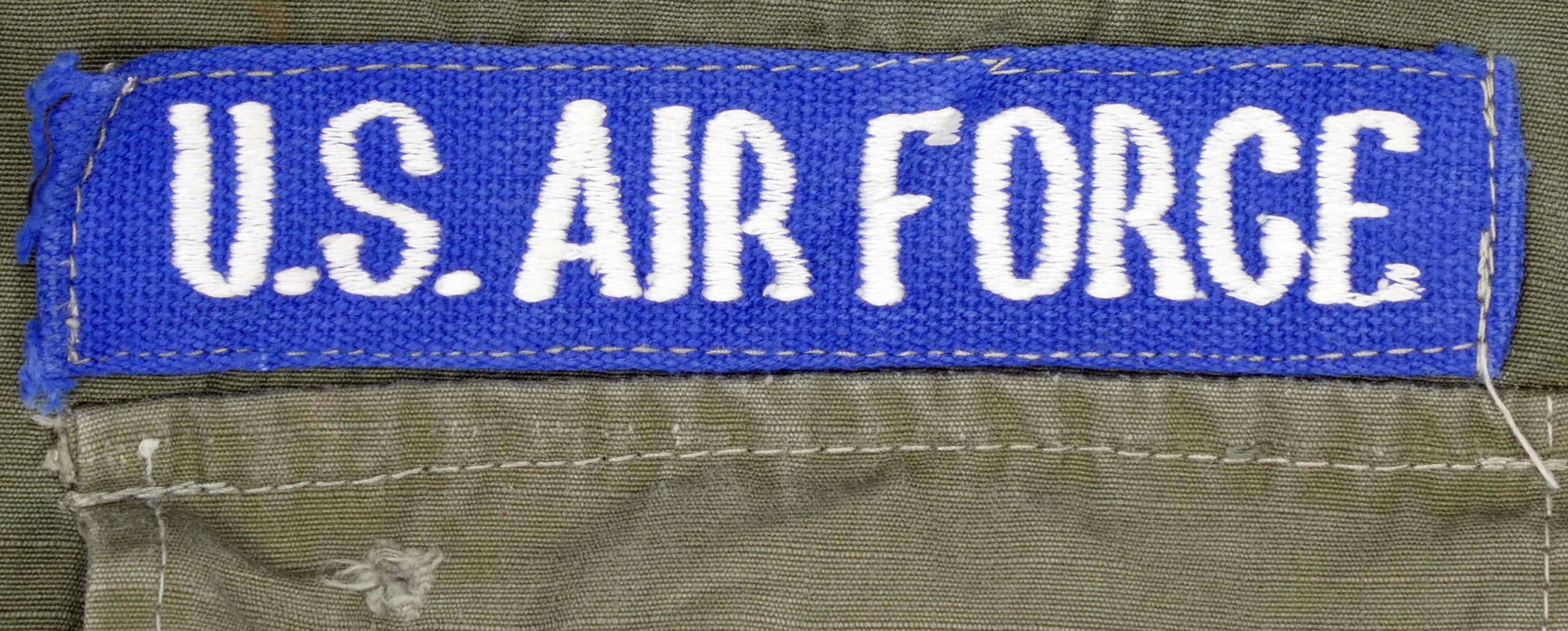
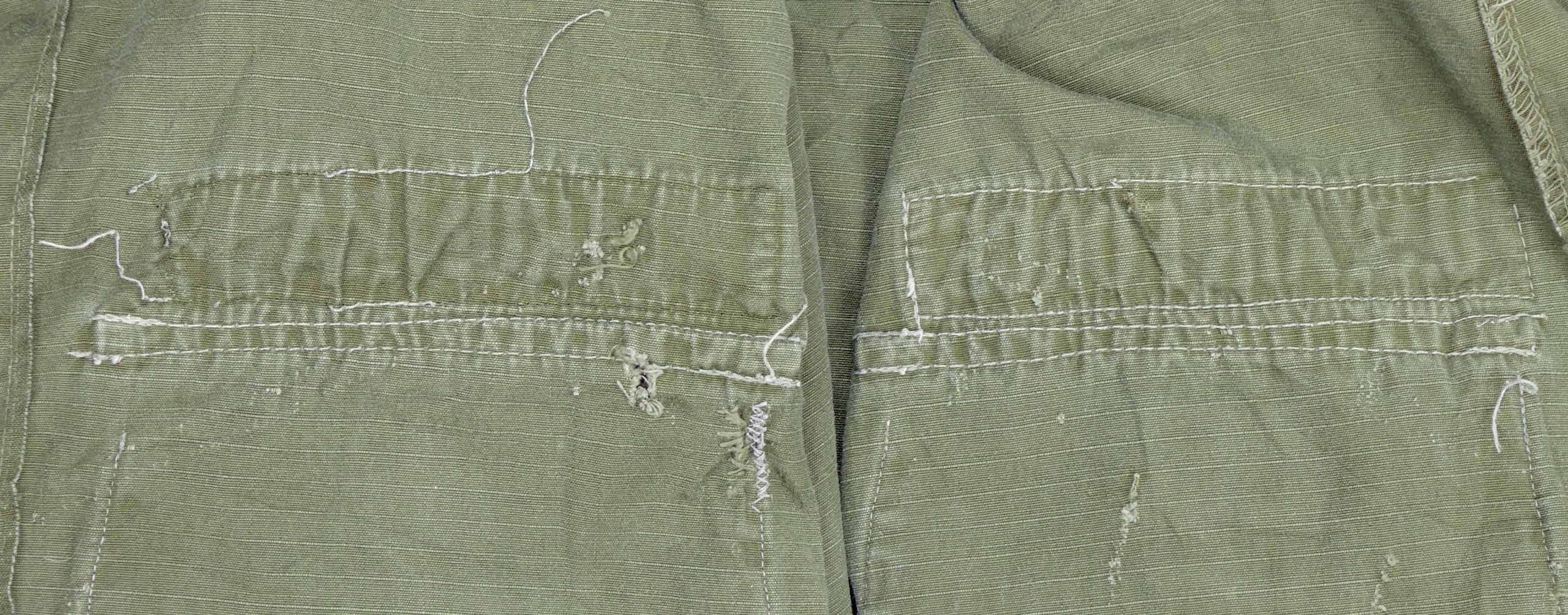
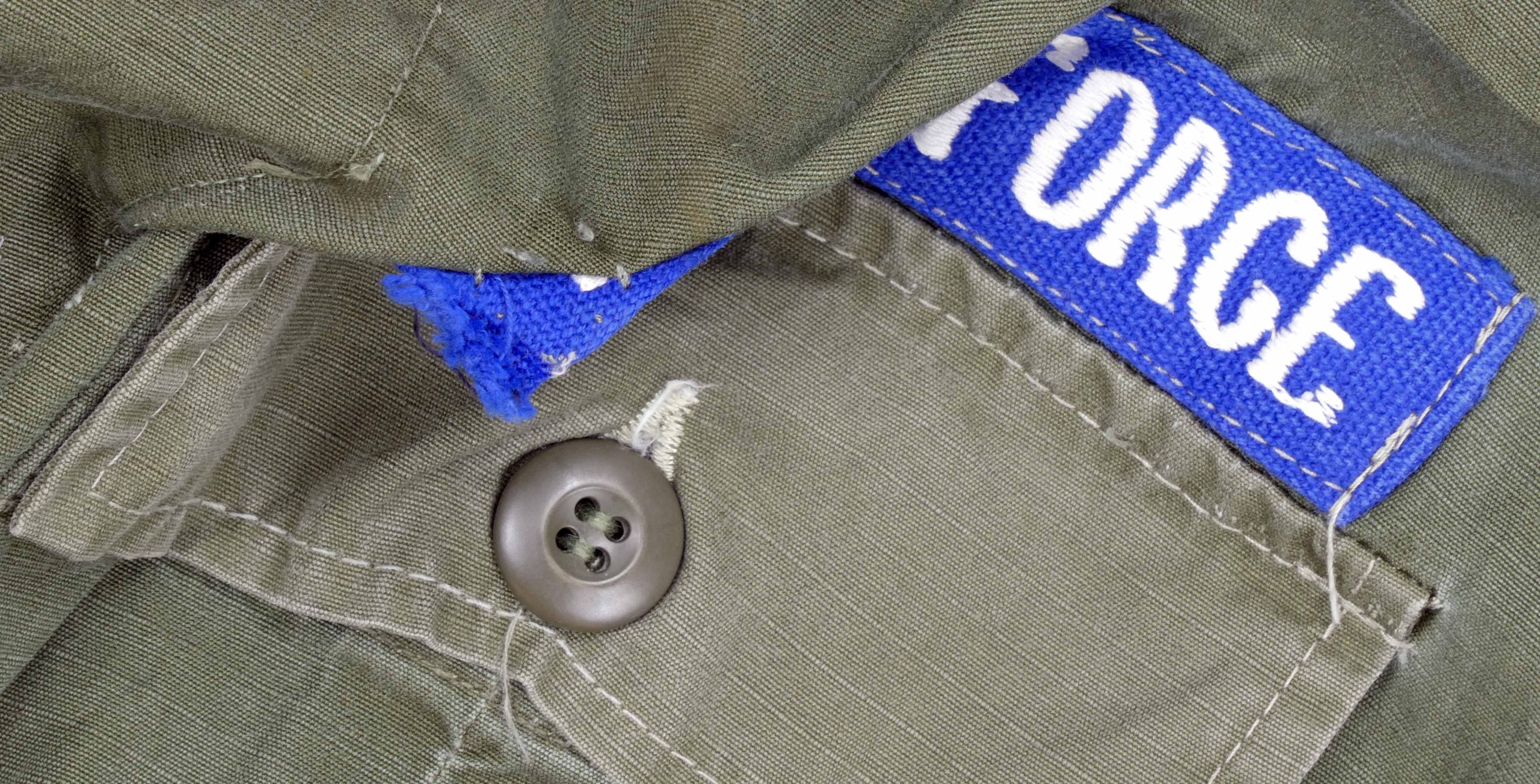
Blue cotton tape with white lettering.
Arm Patch Ghosts:

Rank insignia was removed.
Tags:
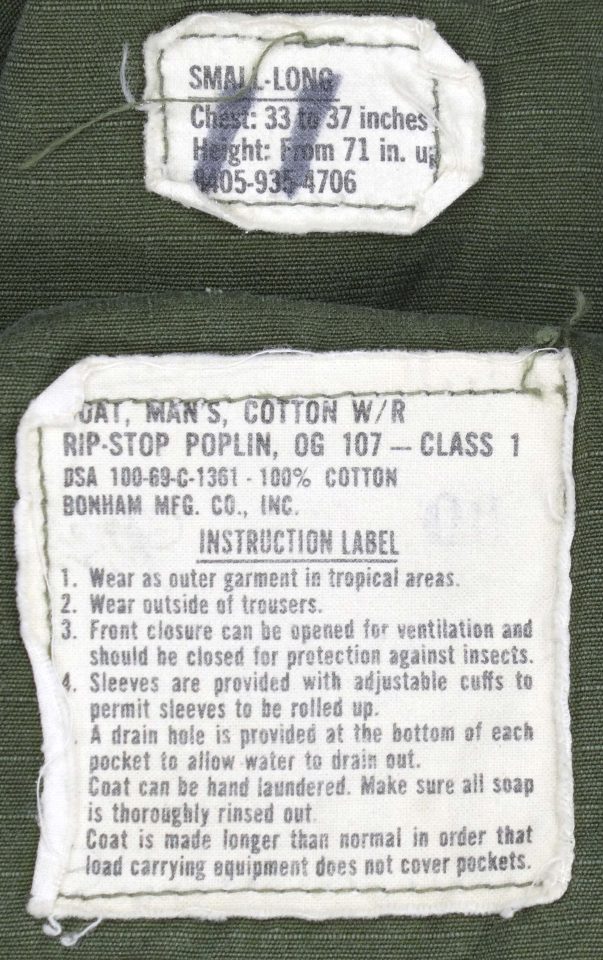
1969 contract date.
Usage Photos:
Vietnam War:
Jungle fatigues are commonly seen in Vietnam War photographs.
US Military:
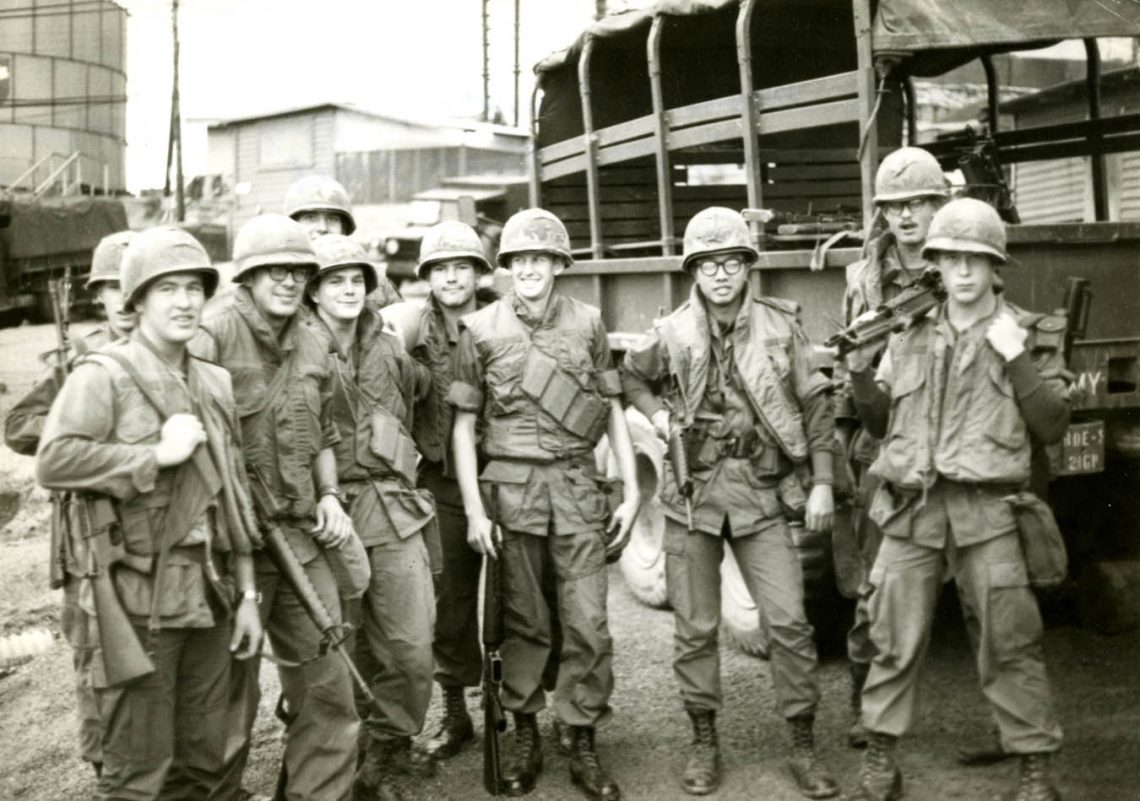
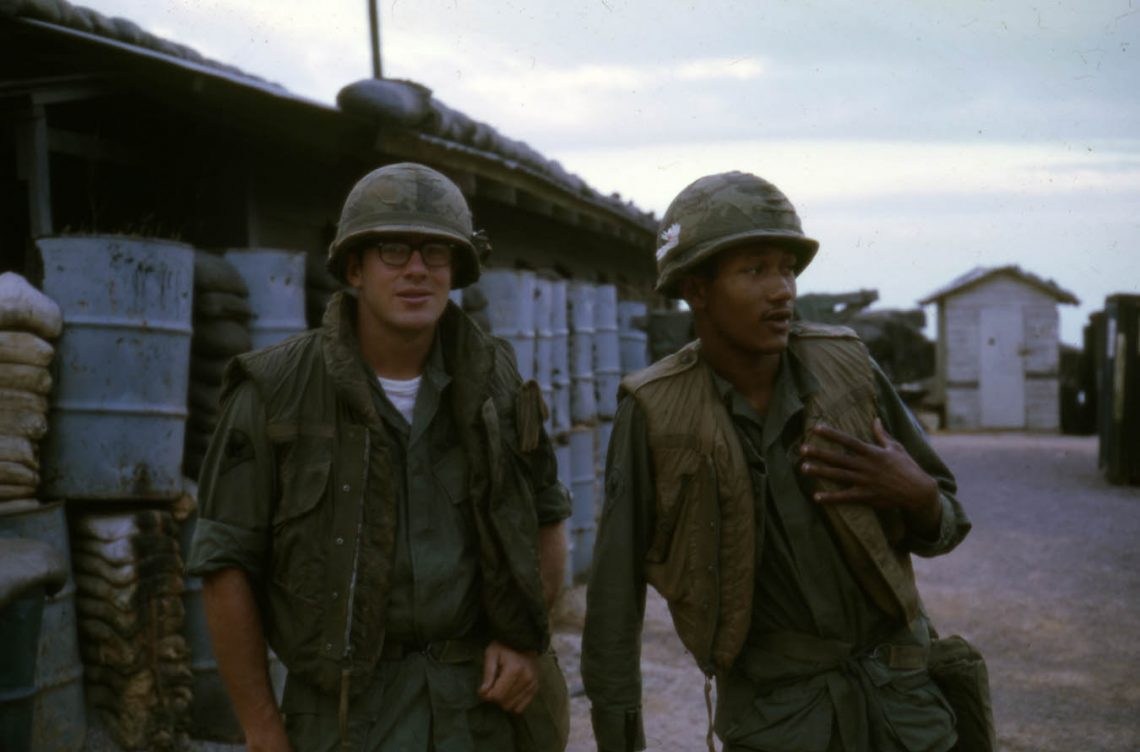

MAC V SOG:
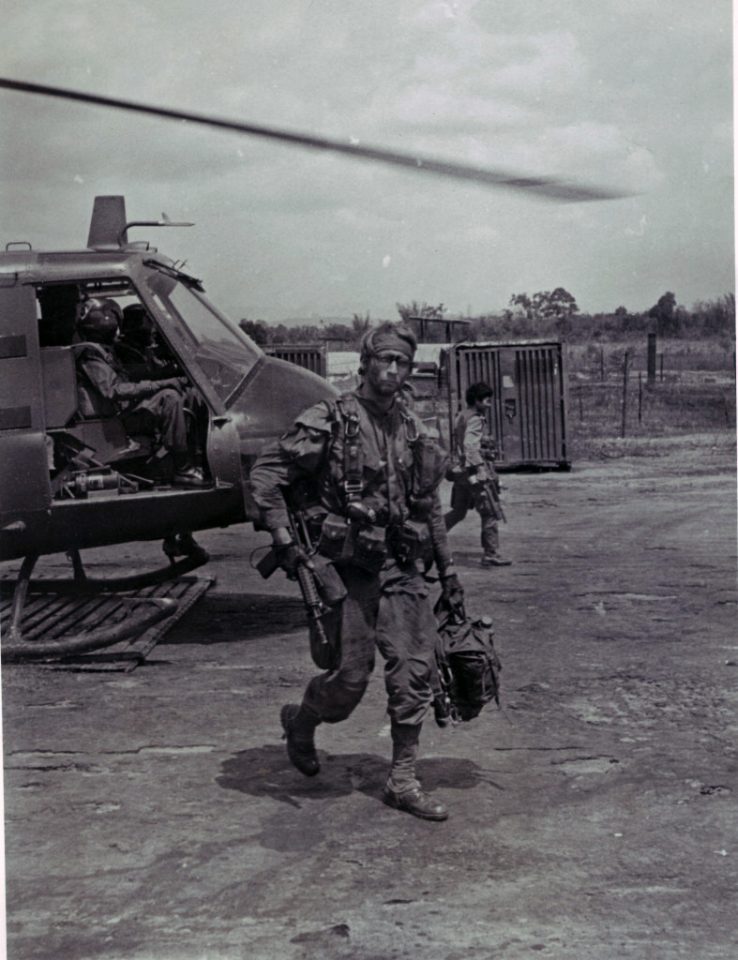

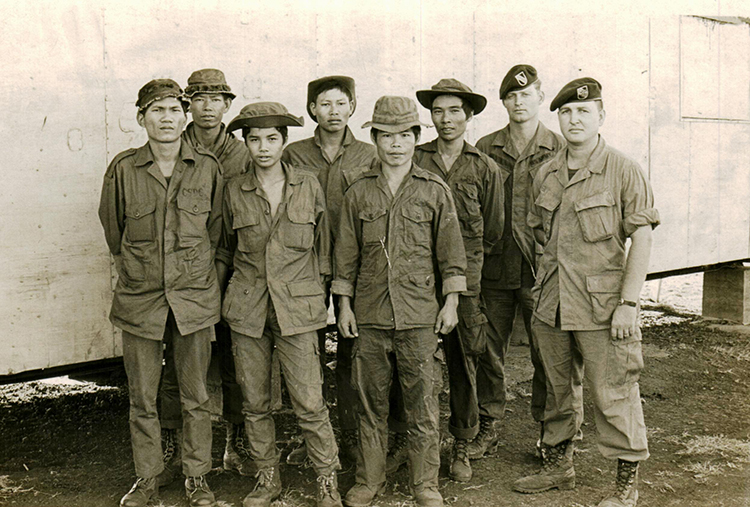
Some Special Forces personnel modified their jungle fatigues by moving chest pockets to the arms.
After 1975:


Although primarily associated with the Vietnam War, jungle fatigues were occasionally used even after BDU uniforms became standard issue, well into the 1980’s, since they were often the only jungle uniform available.
Rhodesian SAS:

Some members of the Rhodesian SAS have been photographed wearing olive drab jungle fatigues, which would have been useful for cross-border operations.
ERDL Camouflage:
Jungle fatigues were also produced in ERDL camouflage, usually on ripstop fabric. There are early non-ripstop poplin examples, mostly second pattern, but these are rarely encountered.
Green Dominant (unpatched):
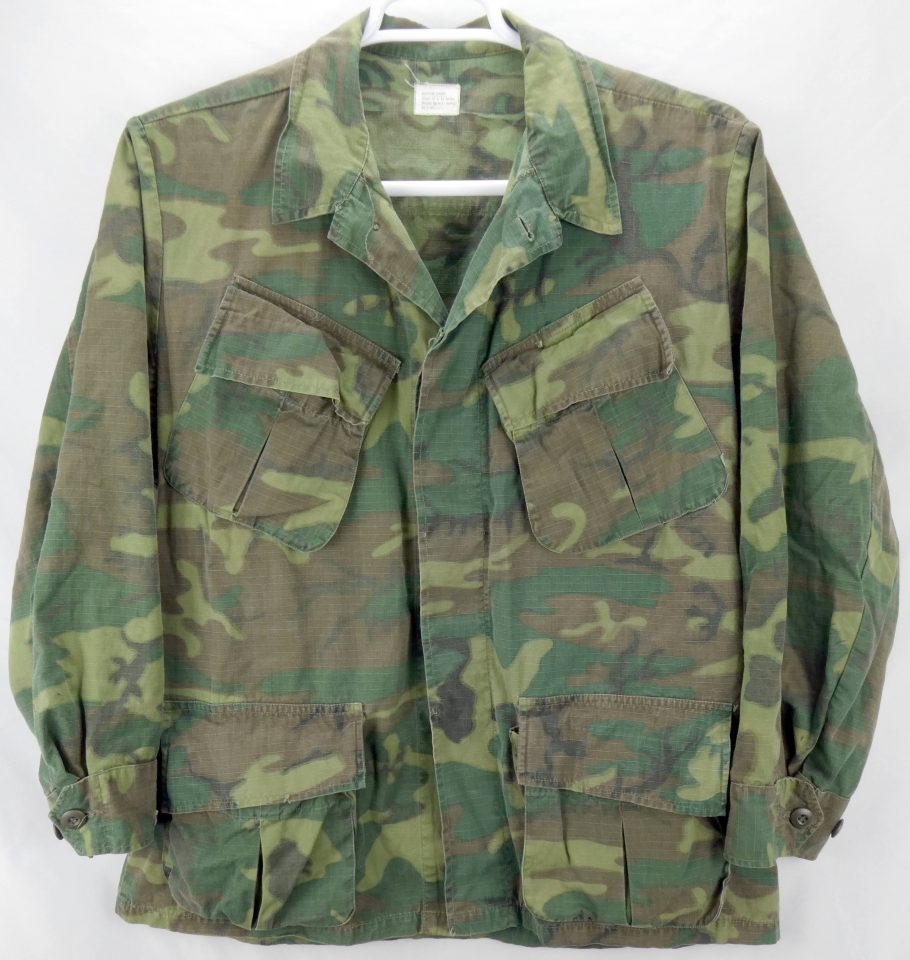

Tags:
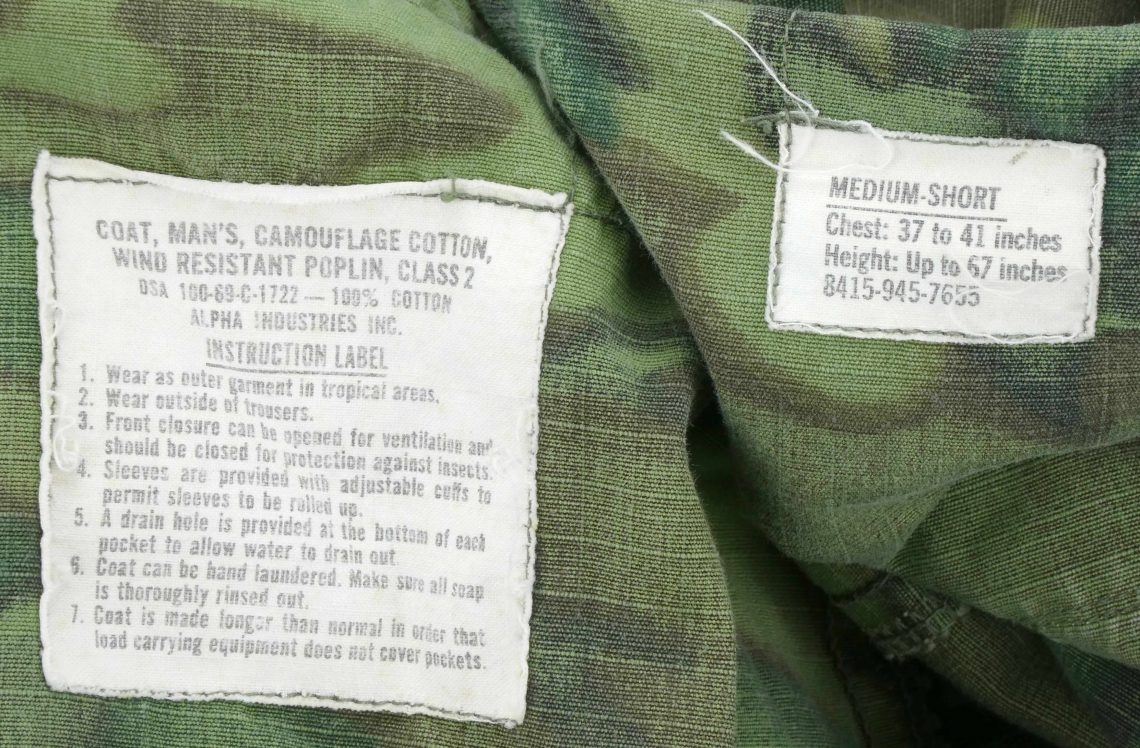
1969 date.
Cuffs:
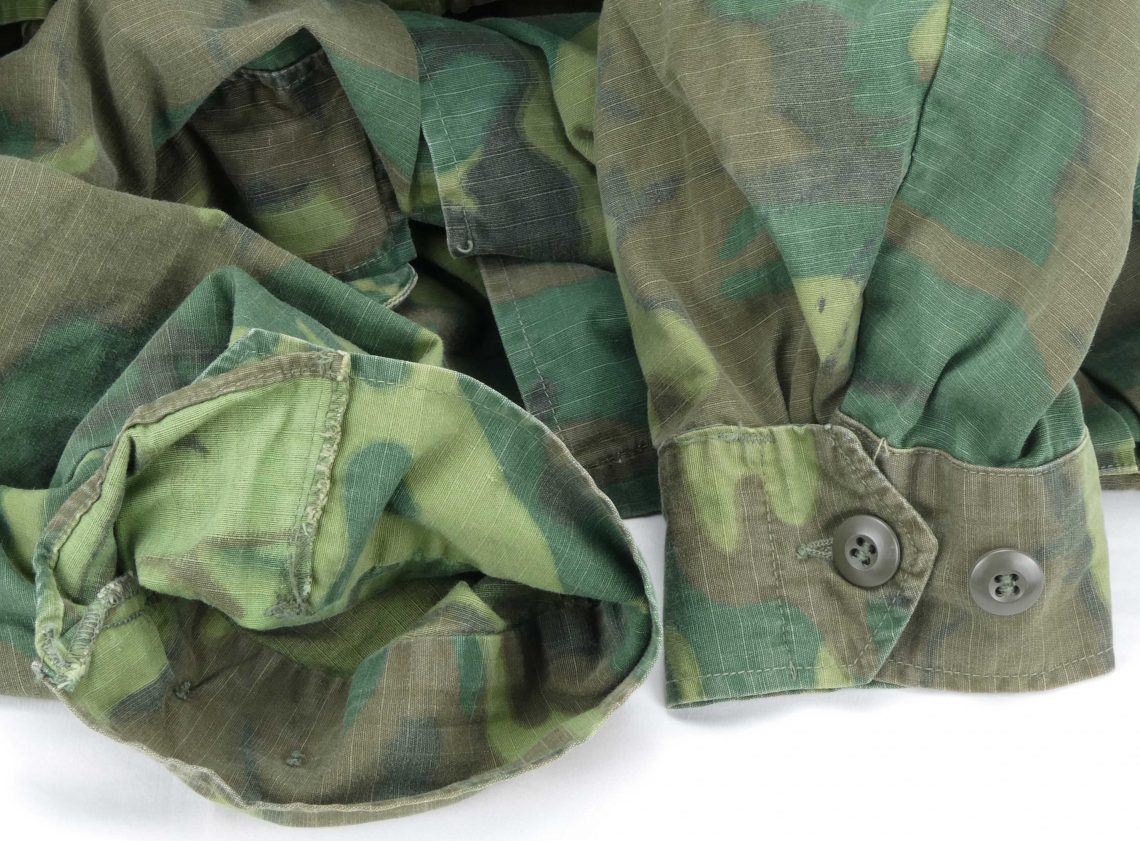
Upper Pockets:
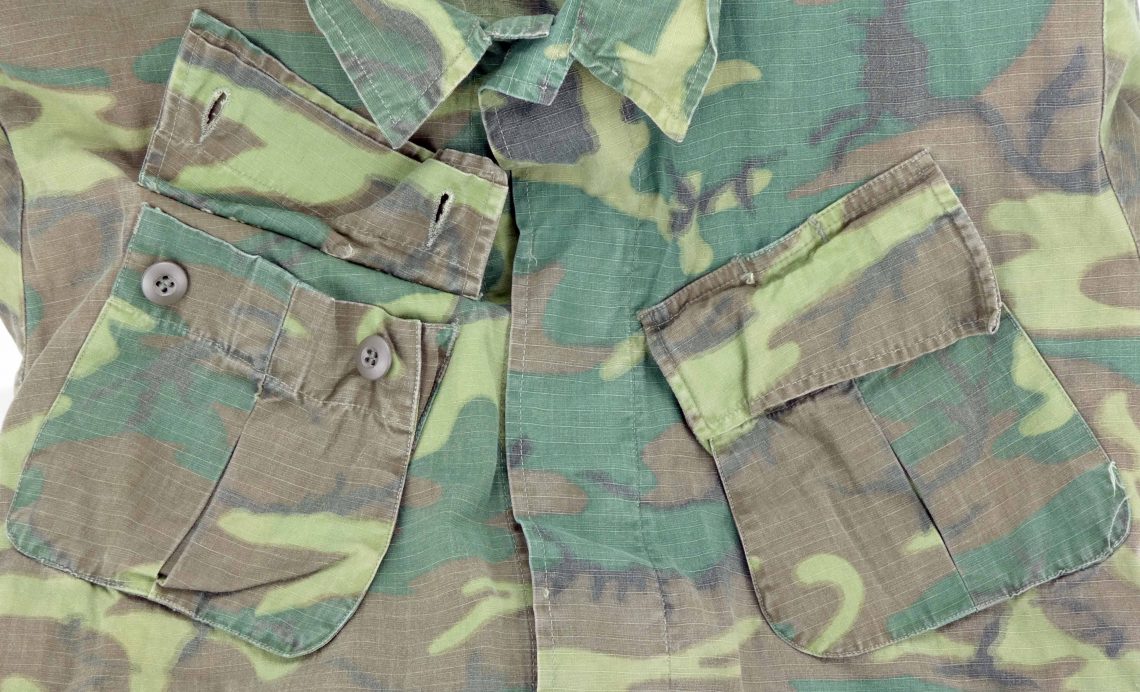
Lower Pockets:
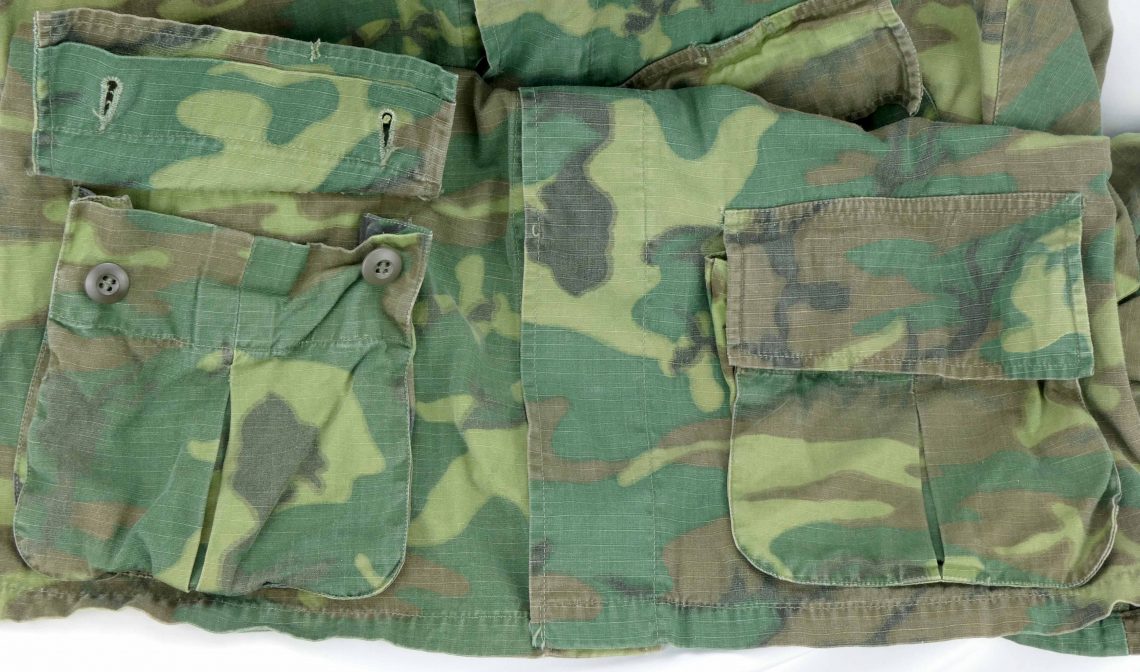
Green Dominant (Americal Division):
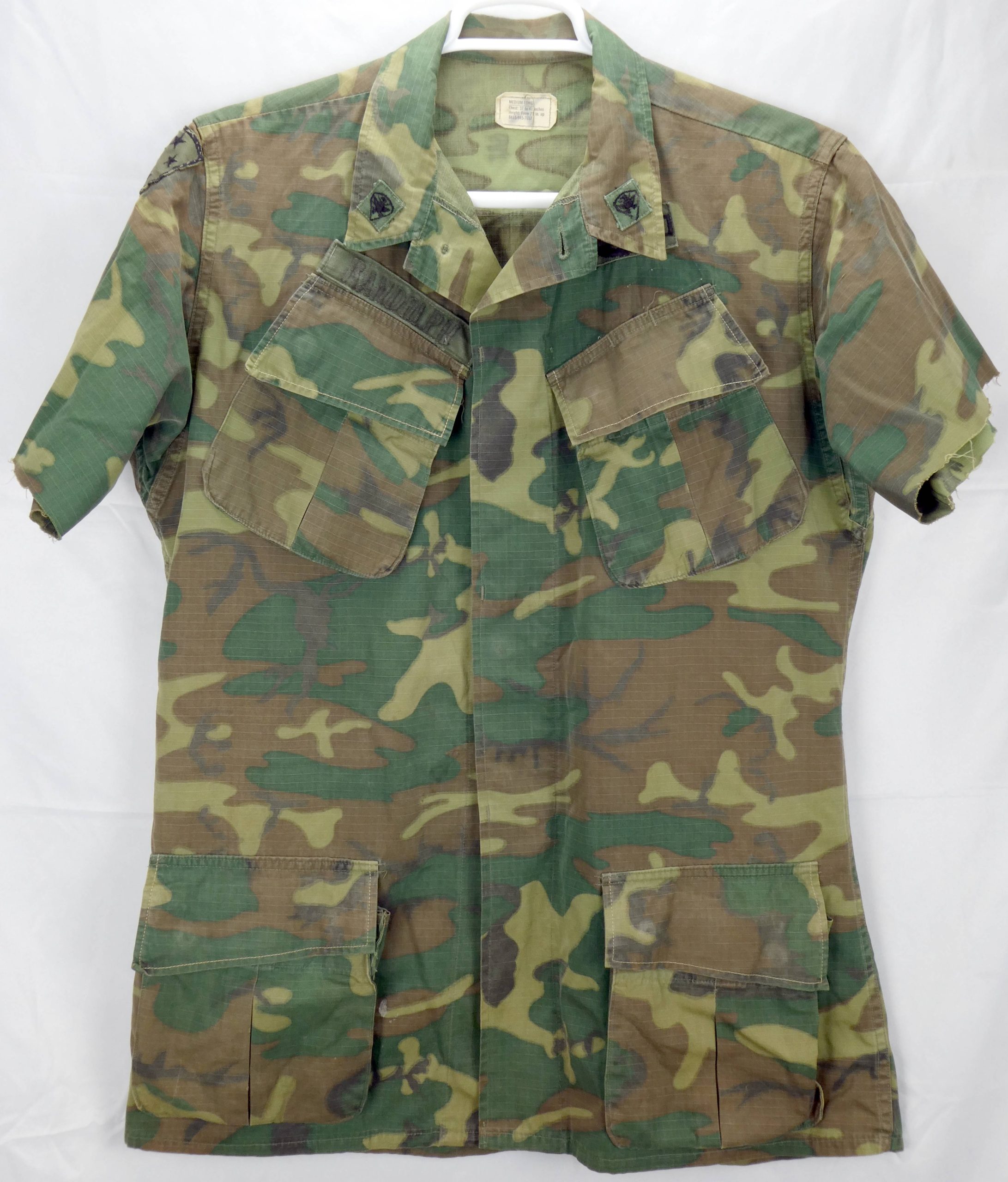
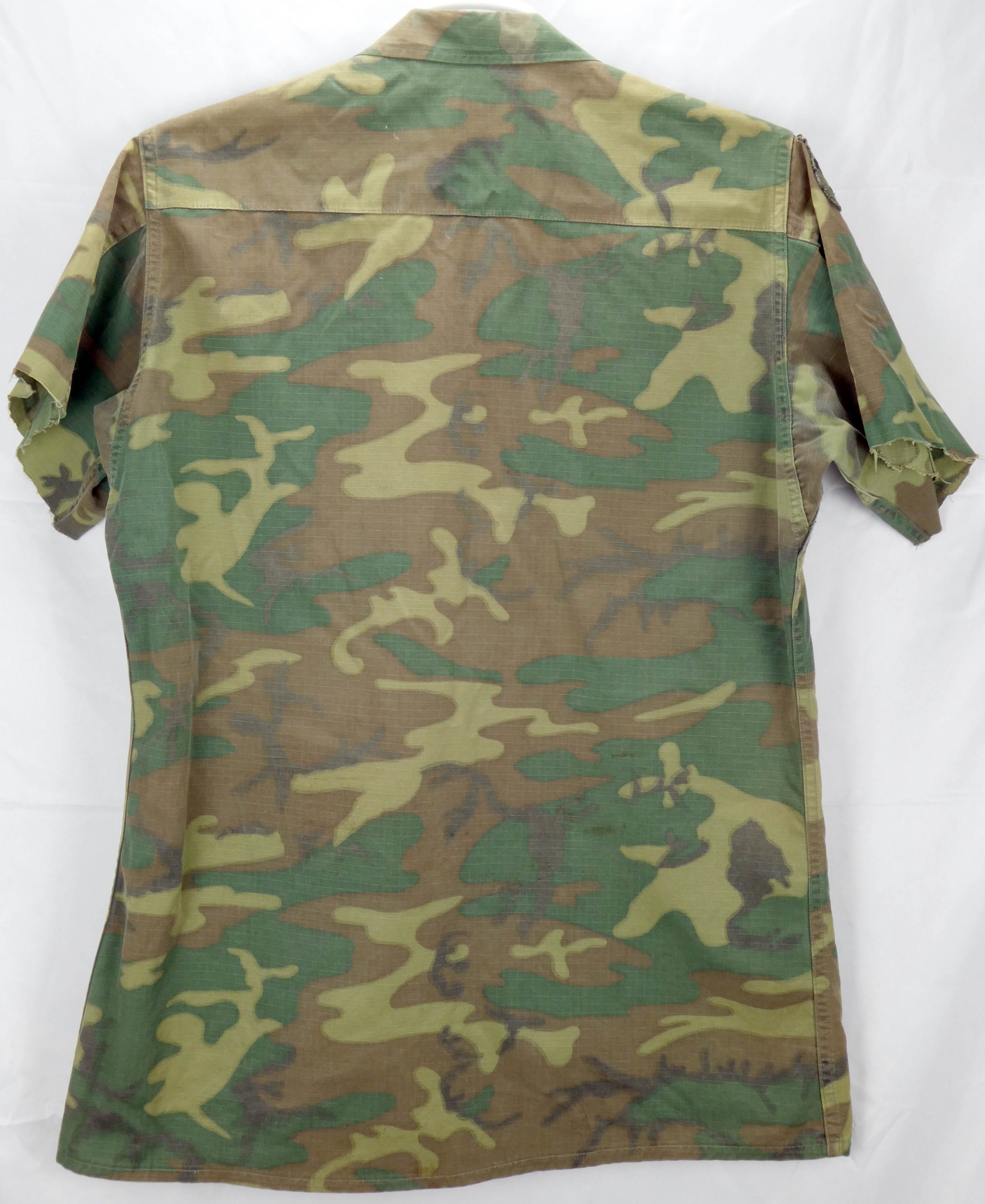
All insignia was likely made in-theater.
Shoulder Patch:
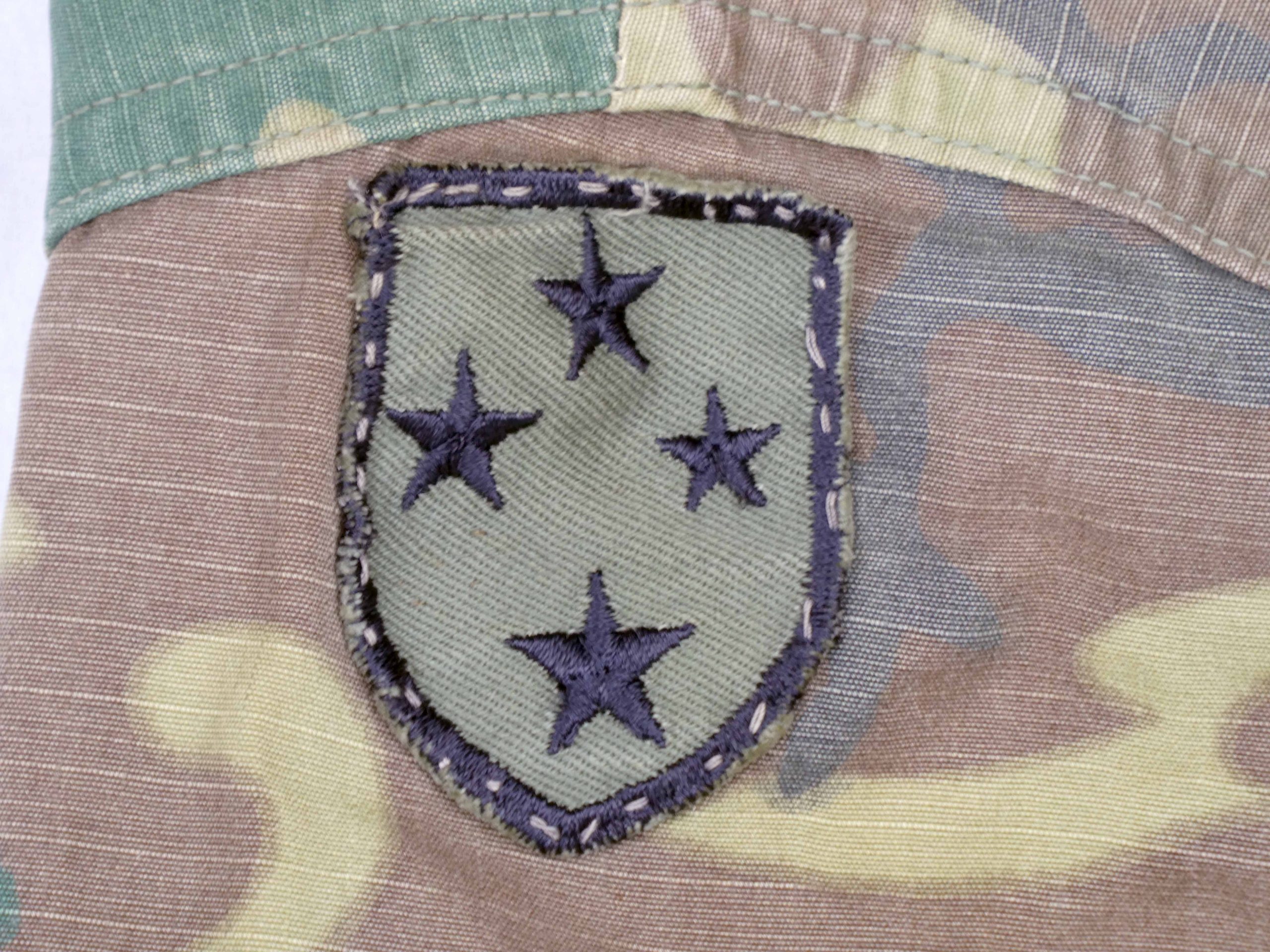
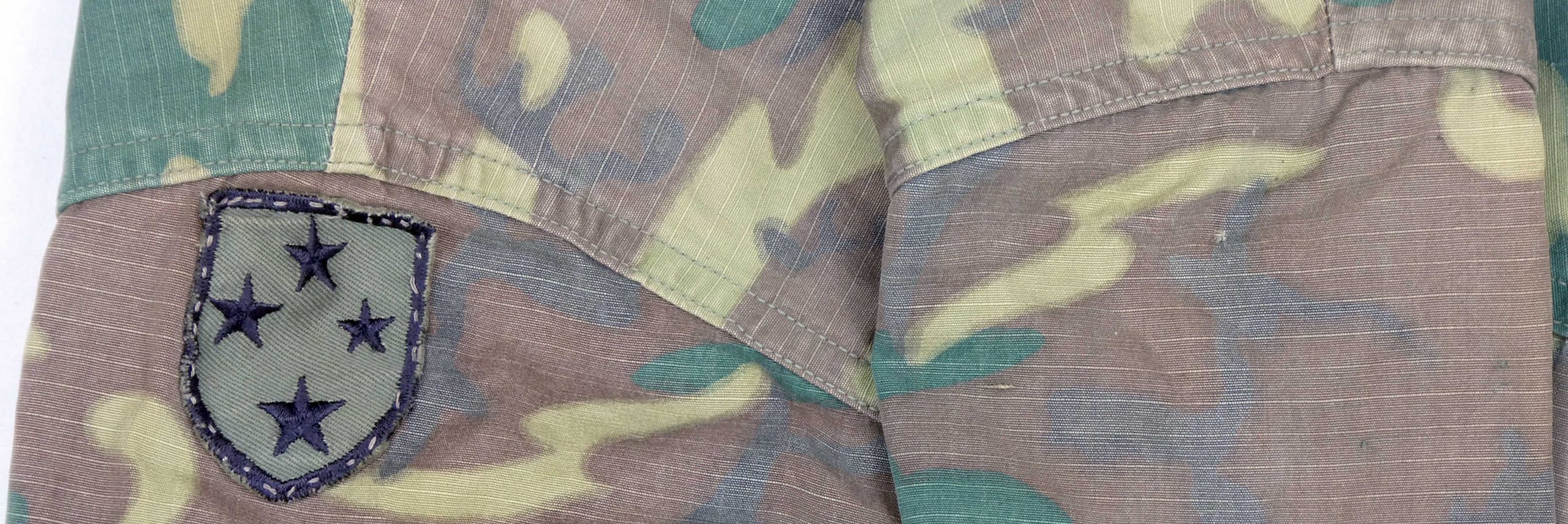
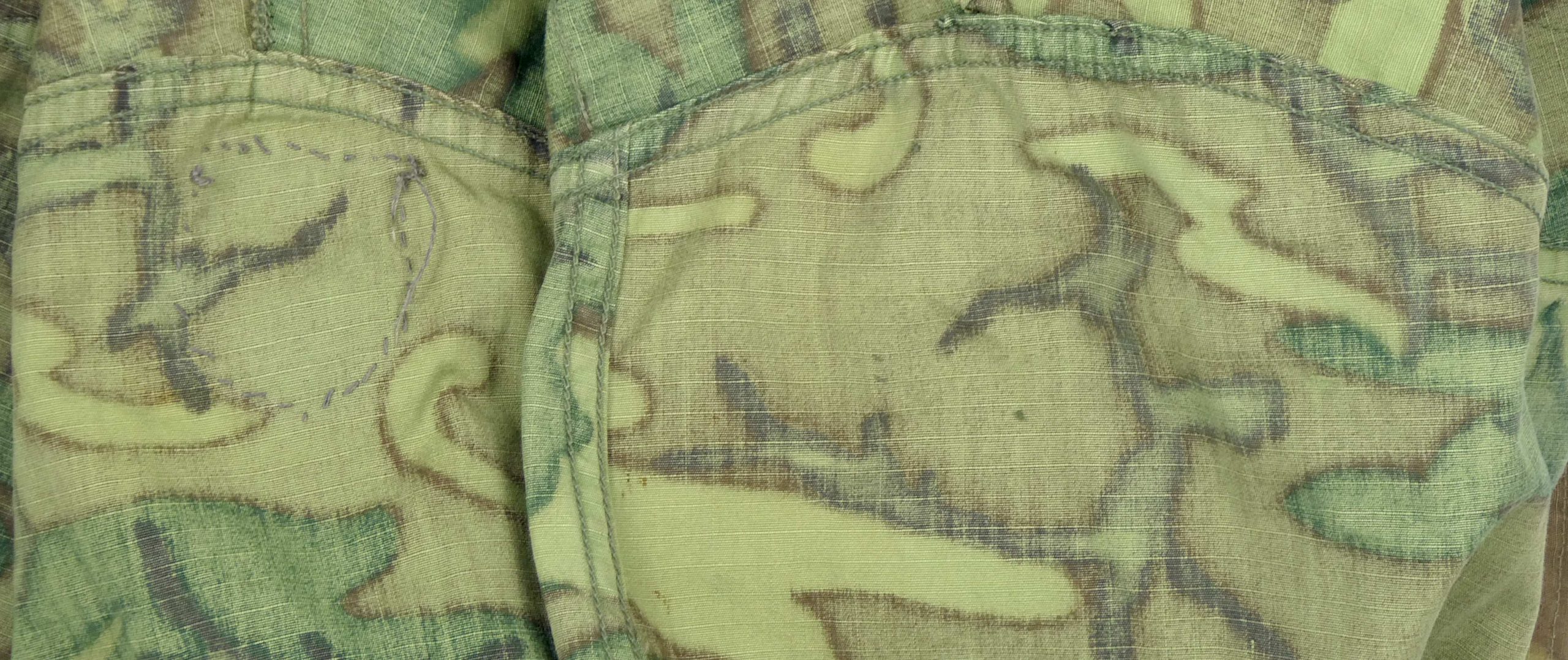
Americal Division patch hand-stitched on with white cotton thread. Another patch was once attached to the opposite shoulder (now removed).
Chest Patches:

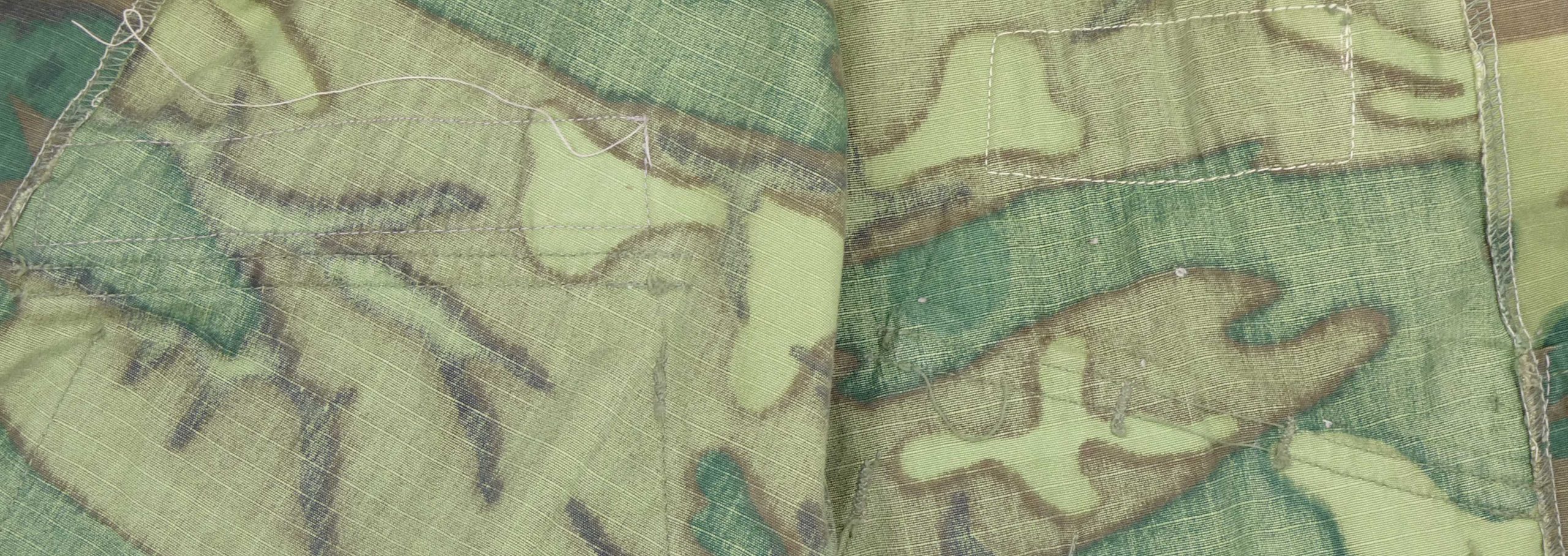
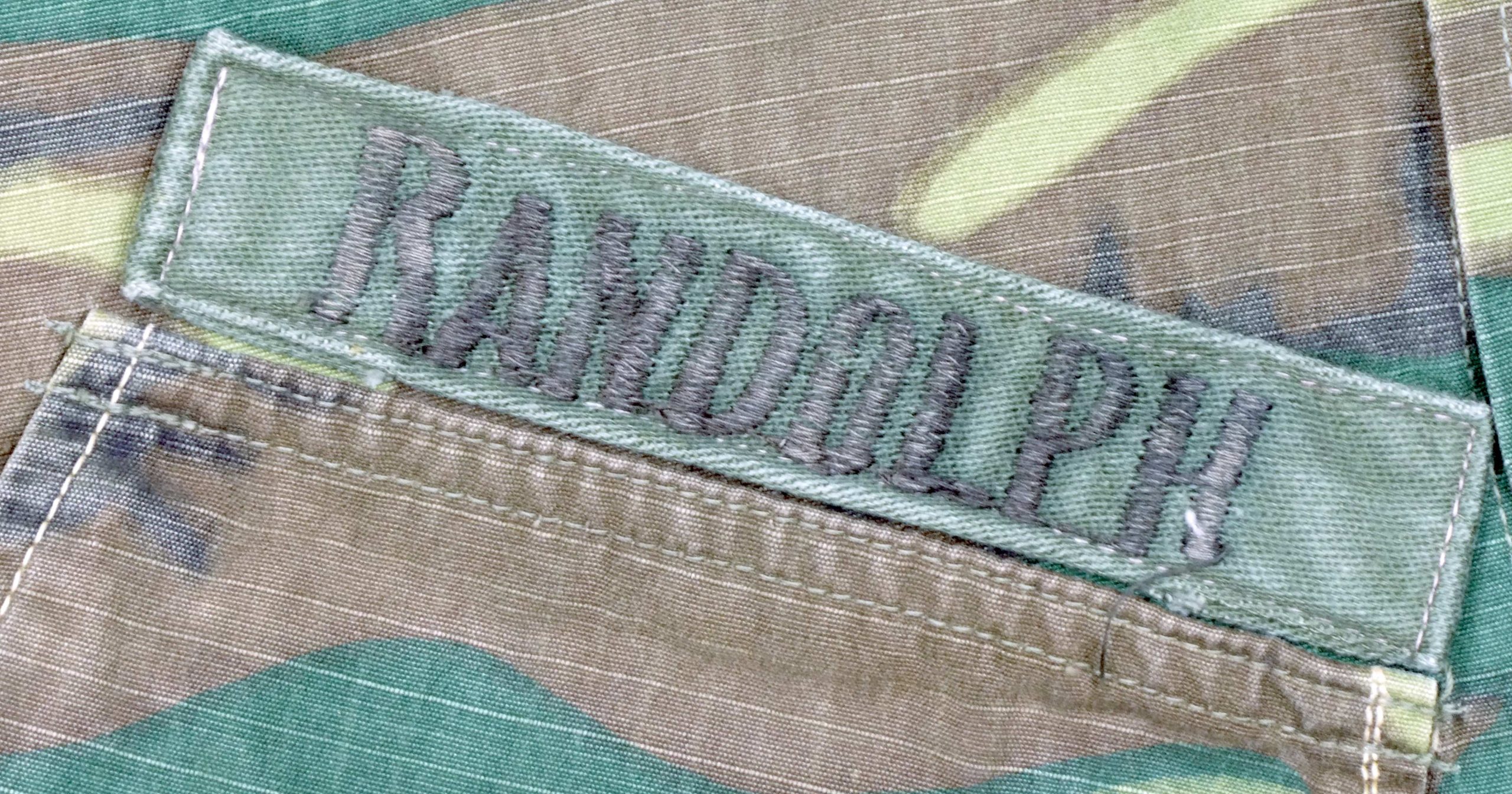
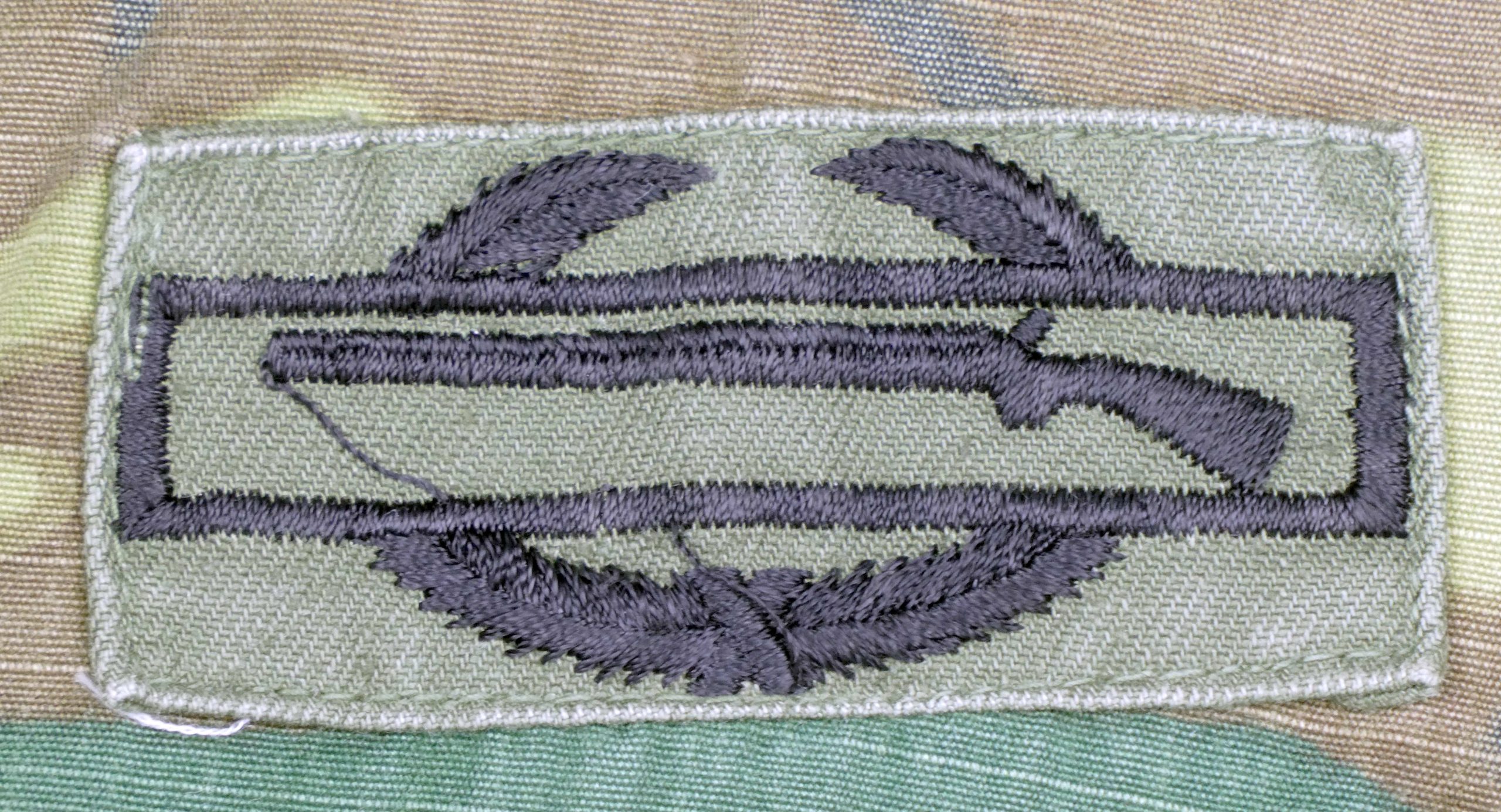
Collar Insignia:
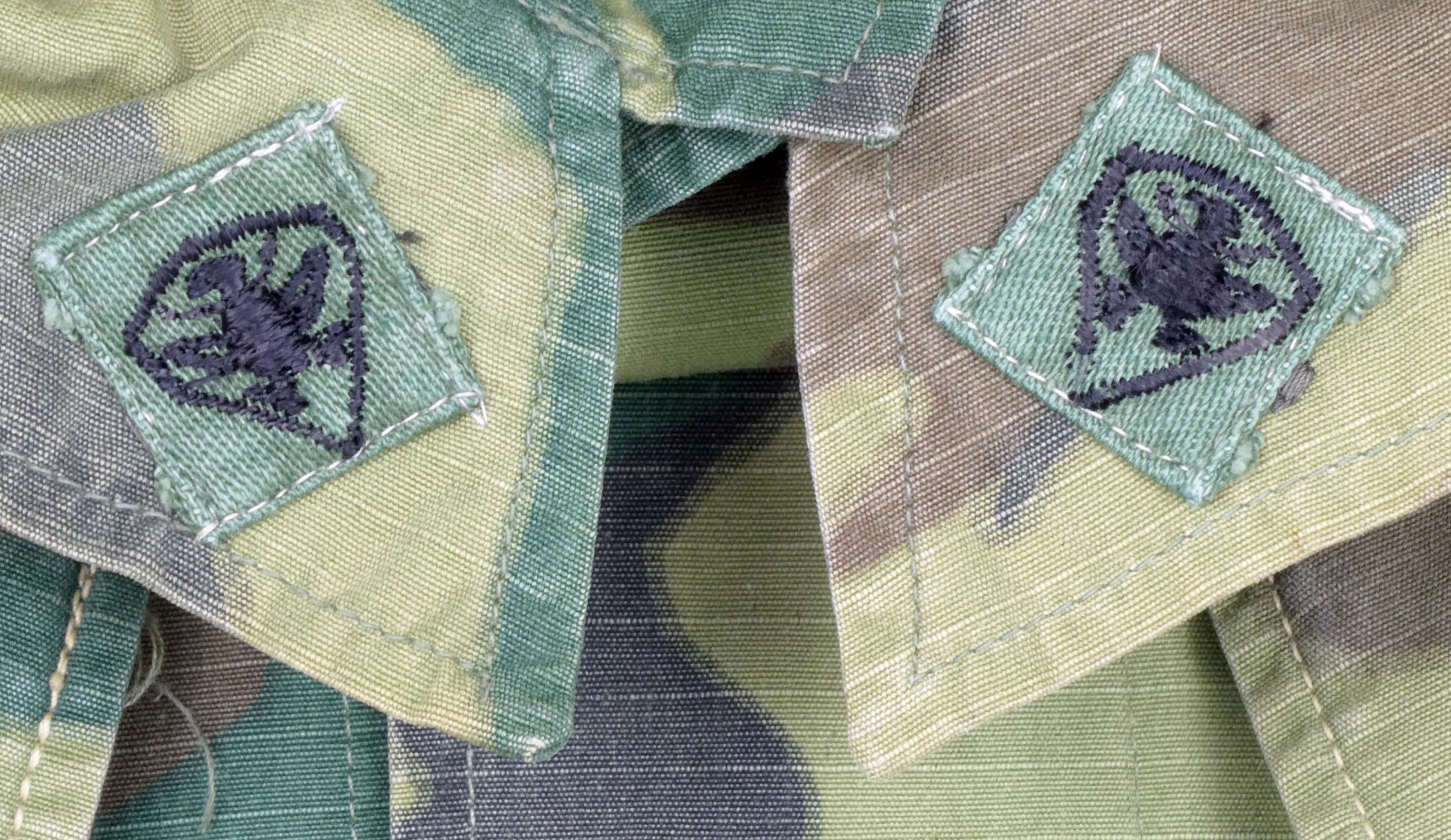

The Specialist 4 (SPC4) patch was applied over the Private First Class insignia originally directly embroidered onto the collar.
Tags:

1969 contract date.
Mixed Green/Brown Dominant:
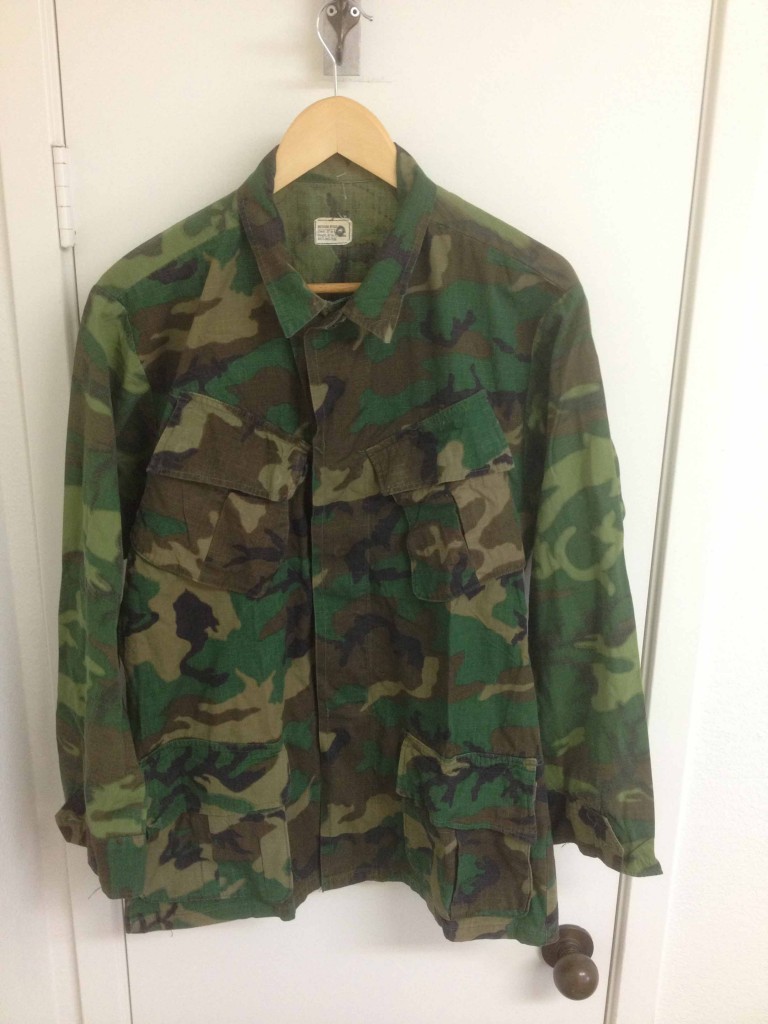
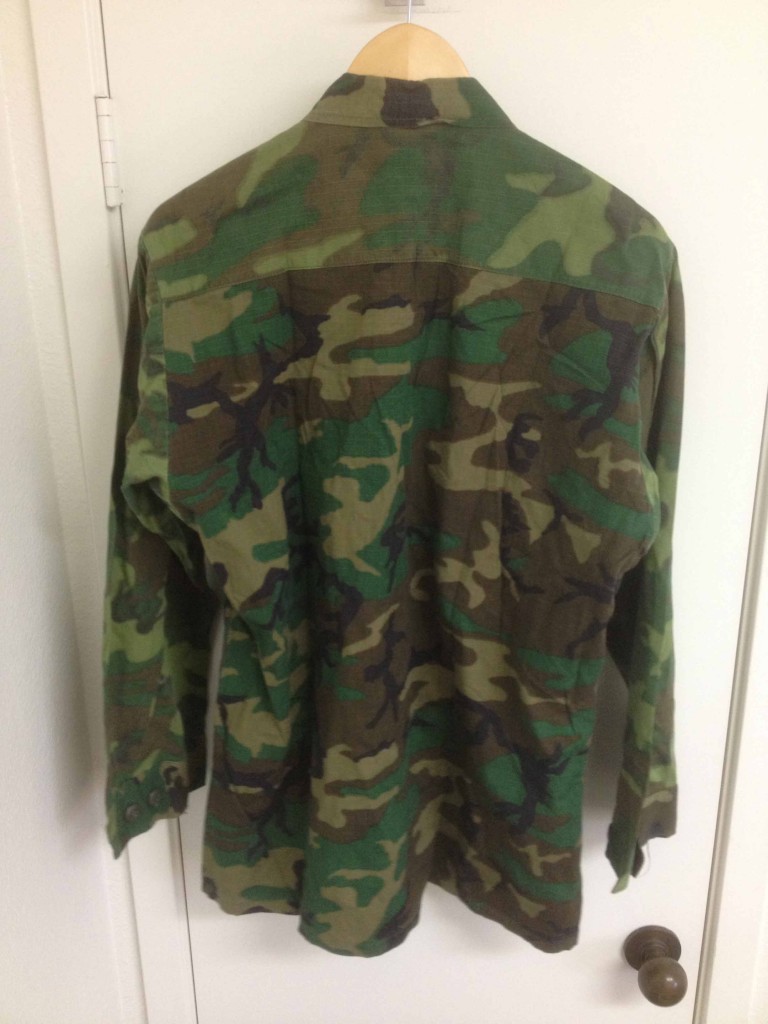
Some camouflage jungle fatigues used material from different fabric runs since “green dominant” and “brown dominant” were never any officially specified variations. This jacket is no longer in my collection.
Tags:
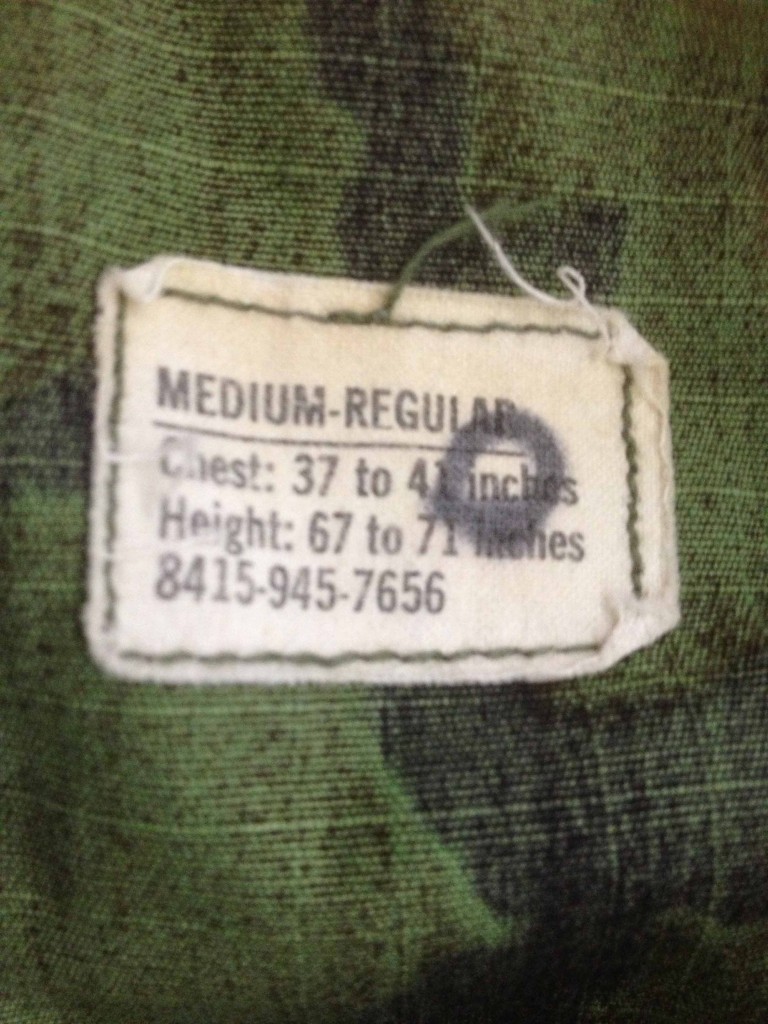
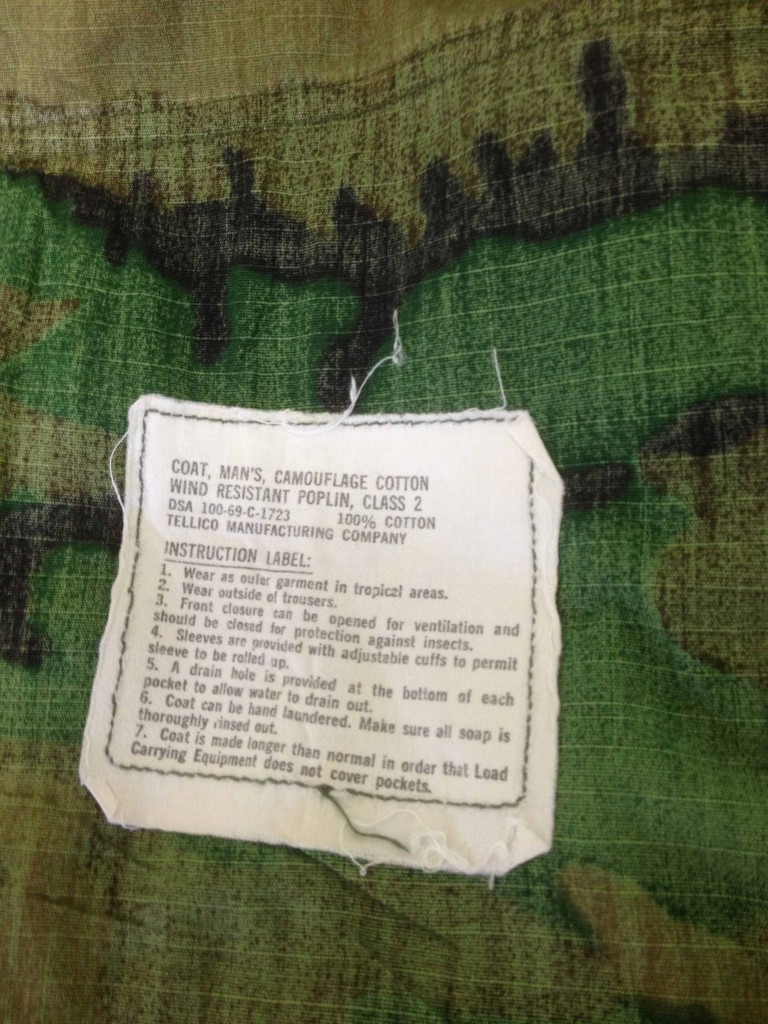
1969 date.
Color Balanced Swatch:
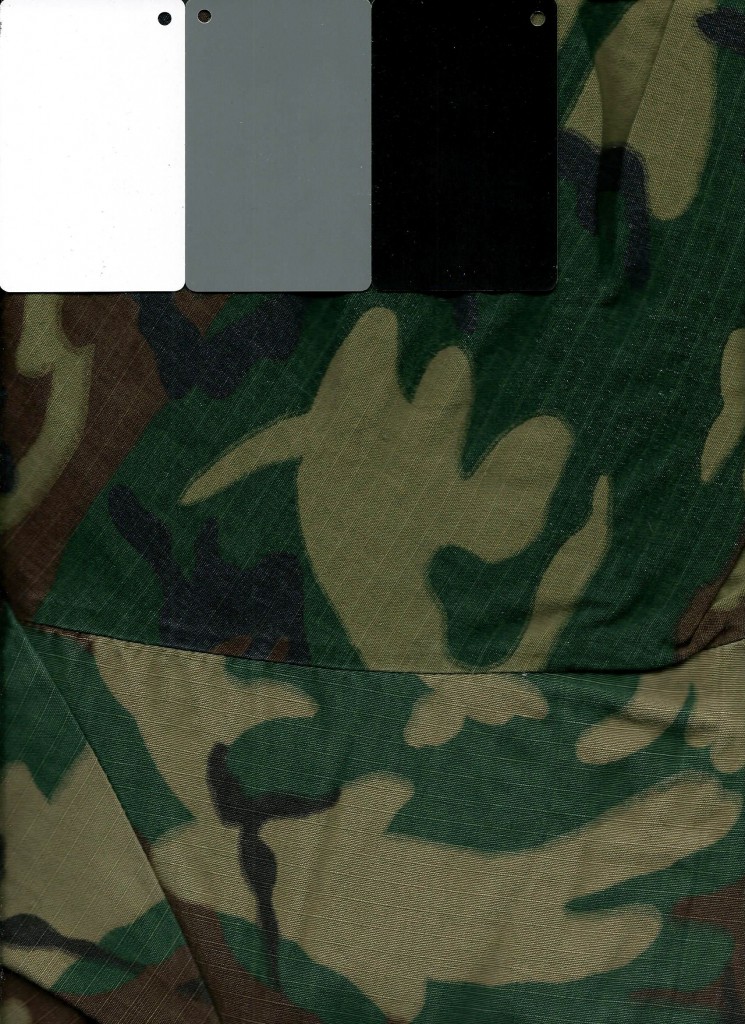
Taken from mixed example. This shows the difference between the green (top panel) and brown dominant colorways.
Usage Photos:
Vietnam War:
Camouflage jungle fatigues are associated with combat troops towards the end of the Vietnam War, such as Special Forces, the Army Airborne Divisions, Air Force Security Troops, as as well as Marines (this list is not all-inclusive).
US Air Force:

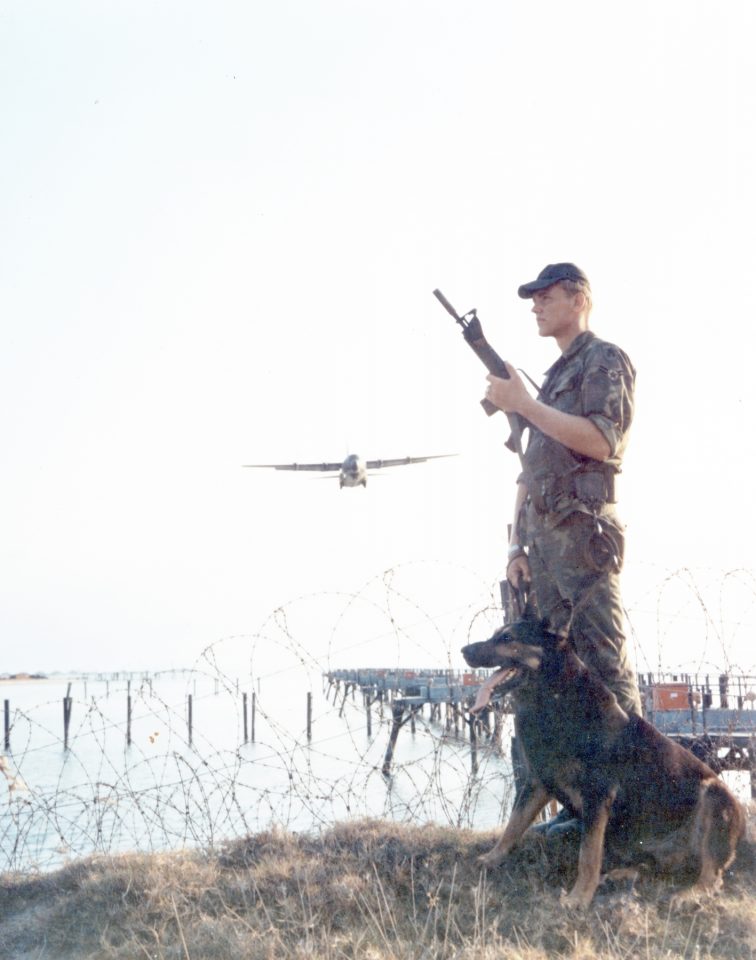
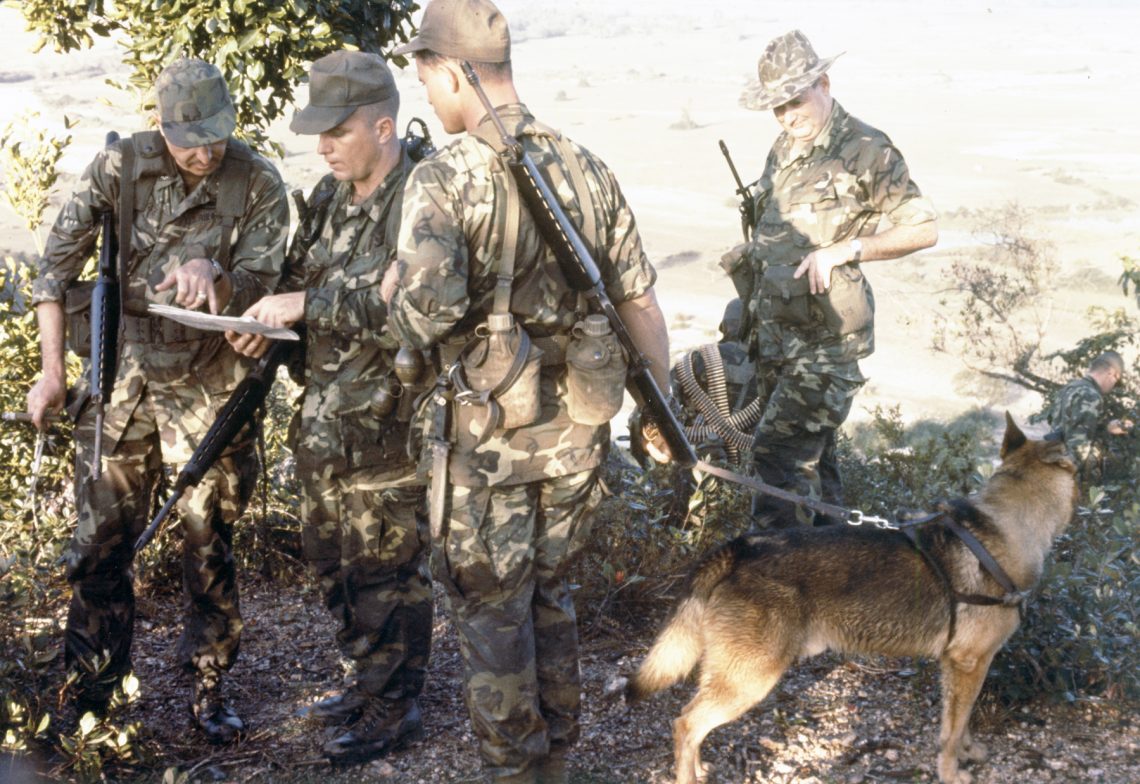
US Marine Corps:

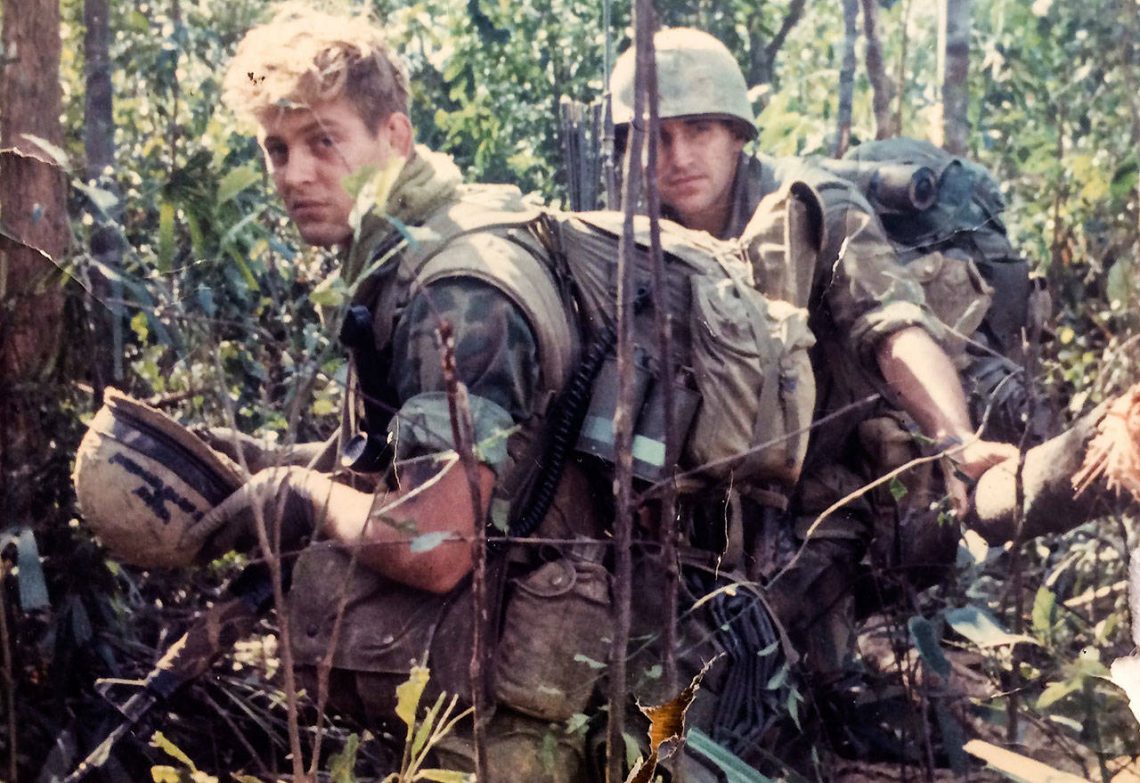
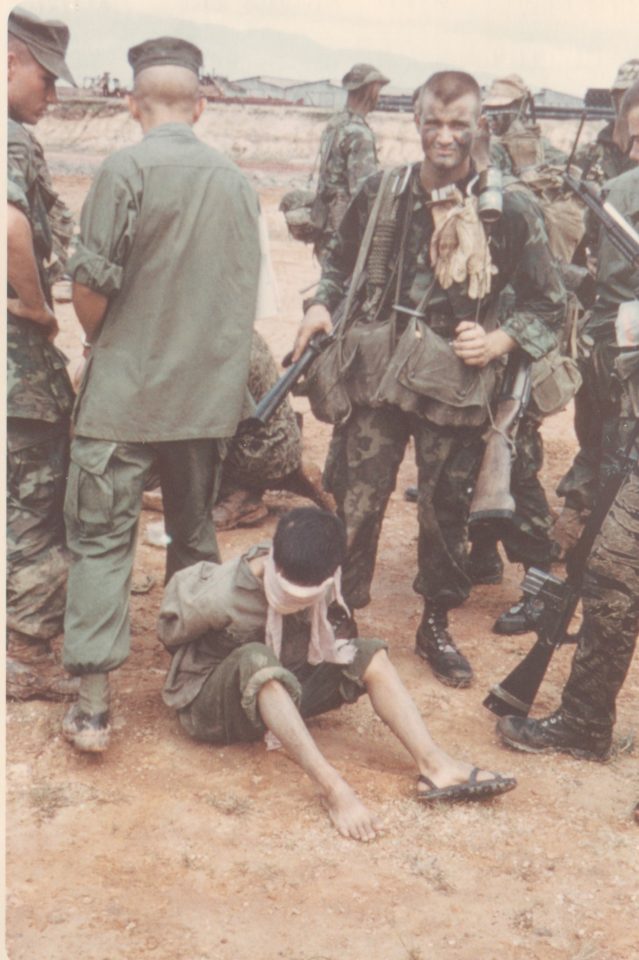
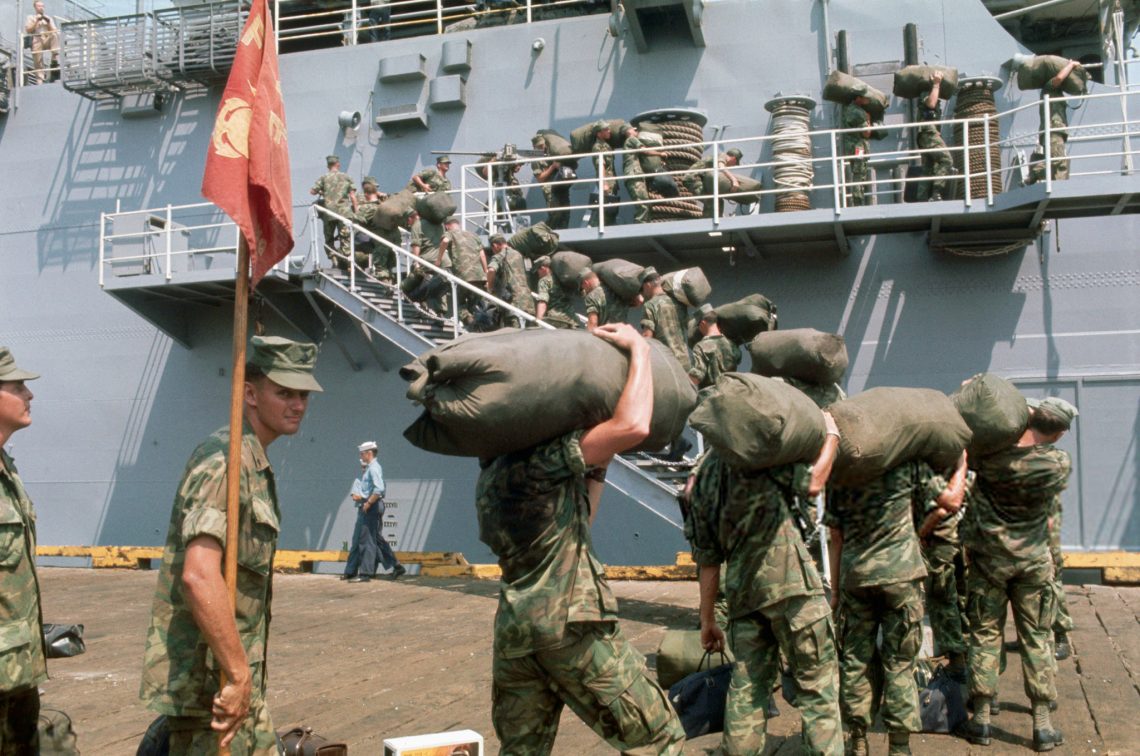
US Army:

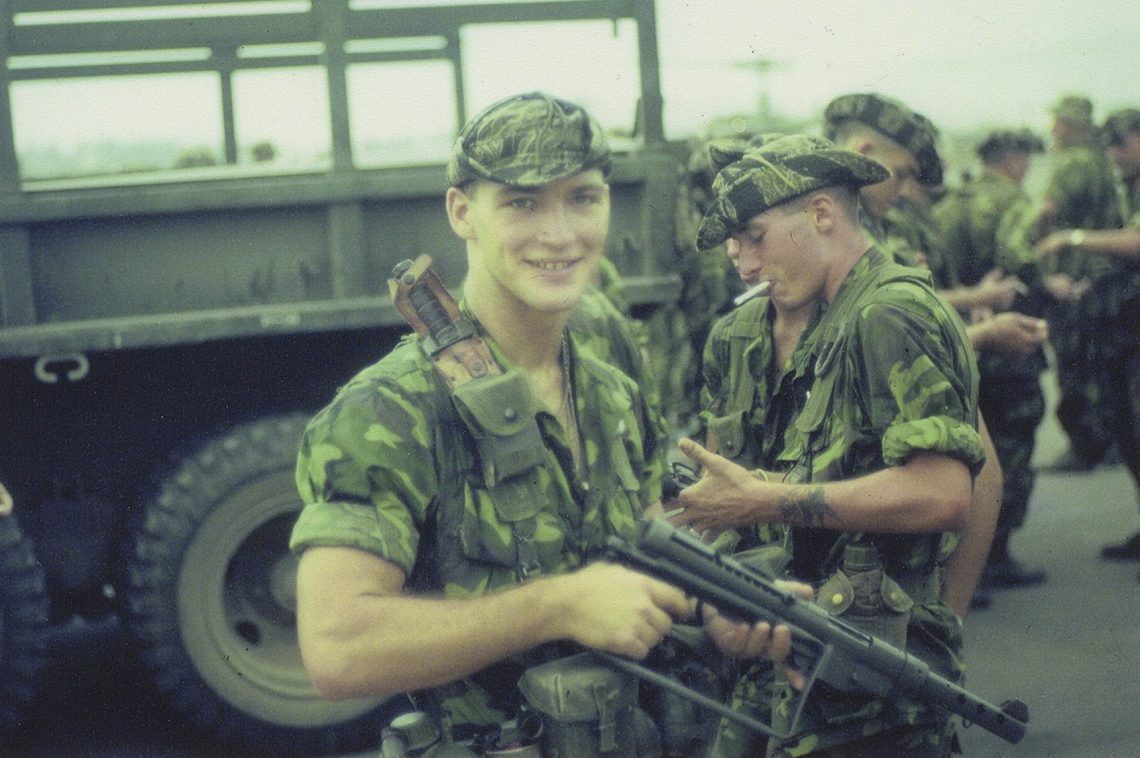


US Navy:

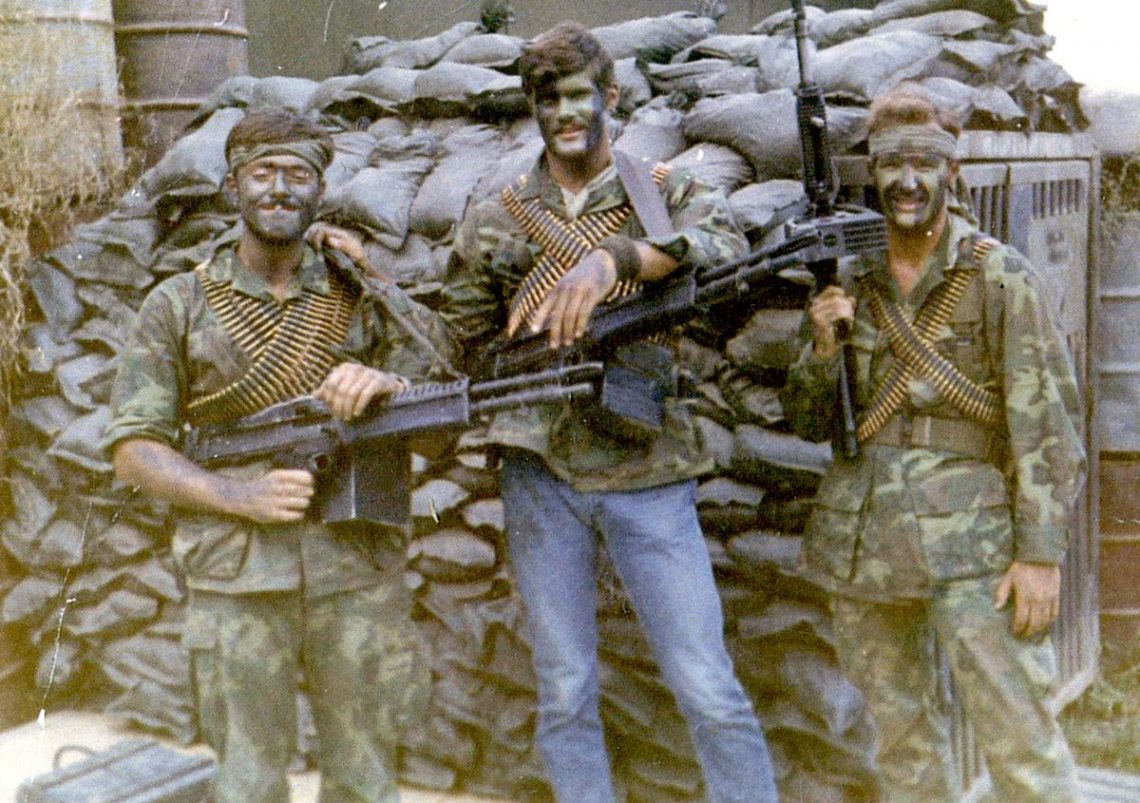

South Vietnam:
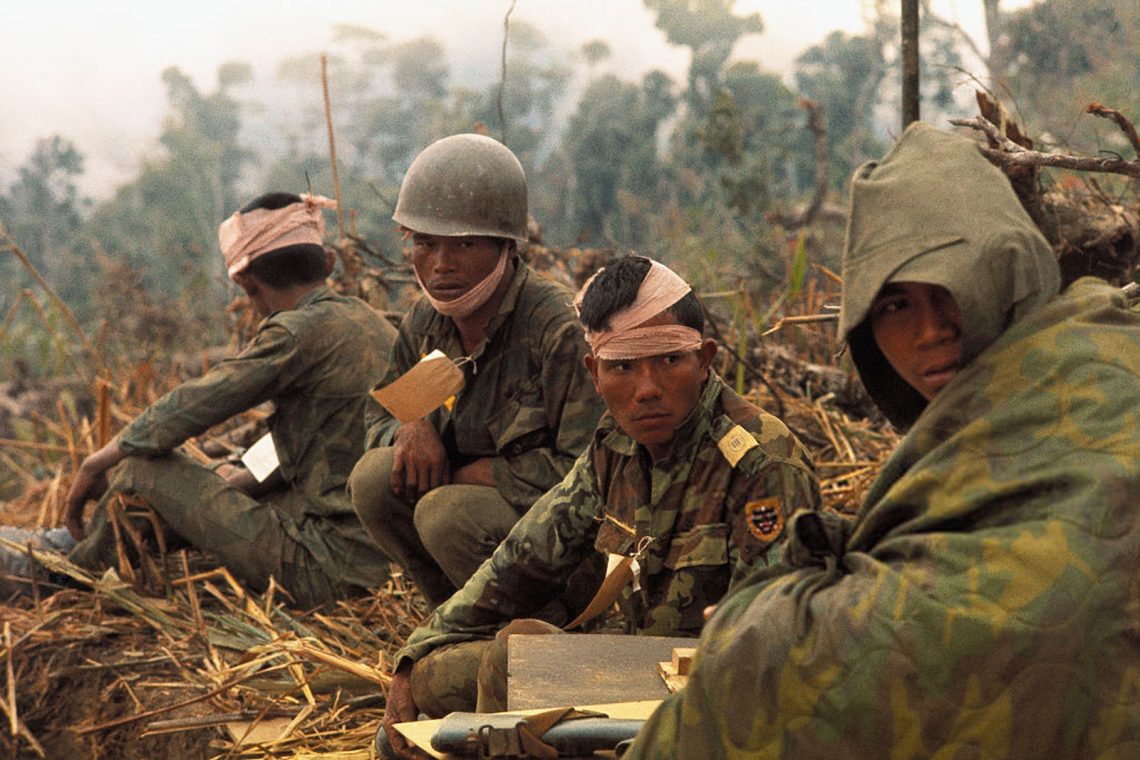
After 1975:


Like the solid colored examples, ERDL jungle fatigues continued to be used after the Vietnam War since they were often the only practical hot weather camouflaged uniform available.
